Trophy armored vehicles Wehrmacht. France
We can safely say that never before has any army in the world captured as much military equipment and ammunition as the Wehrmacht during the French campaign. Does not know story and examples to trophy weapon in such large numbers was adopted by the victorious army. The case is undoubtedly unique! All this applies to the French tanks, the exact number of which is not even called by German sources.
Repaired and repainted in German camouflage, with crosses on the sides, they fought in the ranks of the enemy army right up to 1945 year. Only a small number of them, located in Africa, as well as in France itself, in 1944, were able to rise again under the French banner. The fate of combat vehicles, forced to act "under a foreign flag," was different.
Some tanks, captured serviceable, used by the Germans during the fighting in France. The bulk of the armored vehicles after the completion of the "French campaign" began to be brought to the specially created parks, where they passed the "inspection" in order to determine the faults. Then the equipment was sent for repair or conversion to French factories, and from there it went to German military units.
However, it didn’t go further than the formation of the four regiments and the headquarters of two brigades in winter 1941. It soon became clear that the units armed with French armored vehicles could not be used in accordance with the tactics of the Wehrmacht’s tank forces. And mainly due to the technical imperfections of captured combat vehicles. As a result, at the end of 1941, all the regiments that had French tanks were re-equipped with German and Czechoslovak war machines. The released trophy equipment was used to recruit numerous separate units and subunits that carried mainly security services in the occupied territories, including SS units and armored trains. The geography of their service was quite extensive: from the islands in the English Channel in the west to Russia in the east and from Norway in the north to Crete in the south. - Much of the combat vehicles were converted into various types of ACS, tractors and special vehicles.
The tactical and technical characteristics had the most direct influence on the use of captured cars. Directly as tanks it was supposed to use only H35 / 39 and S35. Apparently, the decisive factor was their higher speed than the other machines. According to the original plans, they should have been equipped with four tank divisions.
After the end of hostilities in France, all serviceable and faulty R35 tanks were sent to the Renault plant in Paris, where they were inspected or restored. Because of its low speed, the R35 could not be used as a battle tank, and around 100 machines the Germans subsequently sent out to carry security services. 25 of them took part in battles with the Yugoslav partisans. Most of the tanks were equipped with German radio stations. The dome-shaped commander's turret was replaced with a flat double-wing hatch.
The Germans transferred part of R35 to their allies: 109 to Italy and 40 to Bulgaria. In December, the 1940 company in Berlin, Alkett, received an order to rework 200 R35 tanks in SAUs armed with a Czech 47-mm anti-tank gun. As a prototype, a similar ACS was used on the chassis of the German tank Pz.l. In early February, 1941, the first self-propelled gun based on the R35 left the factory floor. The gun was installed in the open-top cabin, located on the site of the dismantled tower. The front sheet of the cabin had a thickness of 25 mm, and onboard - 20 mm. The vertical angle of the gun pointing ranged from -8 ° to + 12 °, the horizontal was 35 °. A German radio station was located in the forage niche. The crew consisted of three people. Combat weight - 10,9 t. In a pilot order, one SPG of this type in 1941 was armed with a German 50-mm anti-tank cannon Cancer 38.
200 ordered 174 machines manufactured as ACS, and 26 - as a commander. At the last, the gun was not installed, and its embrasure in the frontal heading was absent. Instead of a cannon mounted machine gun MG34 in the ball-mounted installation Kugelblende 30.
The remaining R35 tanks after dismantling the towers served in the Wehrmacht as artillery towers for 150-mm howitzers and 210-mm mortars. The towers were installed on the Atlantic shaft as fixed firing points.
As mentioned above, the Hotchkiss H35 and H39 tanks (in the Wehrmacht they were designated 35Н and 38Н) were used by the Germans as ... tanks. They also installed double-winged tower hatches and installed German radios. The cars converted in this way entered into service with the German occupying units in Norway, on Crete and in Lapland. In addition, they were intermediate weapons in the formation of new tank divisions of the Wehrmacht, for example, 6, 7 and 10. As of May 31, the 1943 of the year in the Wehrmacht, Luftwaffe, SS forces and others was operated by 355 tanks 35Н and 38Н.
15 machines of this type were transferred to Hungary in the 1943 year, another 19, in Bulgaria to the 1944 year. A few 38H received Croatia.
The 1943 - 1944 60 chassis tanks "Hotchkis" was converted into 75-mm self-propelled anti-tank gun. Instead of the removed tower on the tank hull, an impressive top-open cabin was mounted, in which the 75-mm Cannon 40 cannon was mounted. The thickness of the frontal armor plates of the cabin was 20 mm, onboard - 10 mm. With a crew of four, the combat mass of the machines was equal to 12,5 t. The Baukommando Becker enterprise (apparently, the army repair plant) was engaged in the conversion of tanks into self-propelled guns.
At the same enterprise, 48 “hot points” were converted into self-propelled guns, armed with an 105-mm howitzer. Externally, it was similar to the previous car, but in its cabin was placed the 105-mm howitzer leFH 18 / 40. Vertical homing angles ranged from -2 ° to + 22 °. The crew consisted of five people. 12 self-propelled guns of this type entered service 200-th division of assault guns.
For units armed with self-propelled guns on the basis of the Hotchkis tanks, the 24 tank was converted into vehicles of advanced artillery observers, the so-called grosser Funk-und Befehlspanzer 38H (f). A small amount of 38H was used for training purposes, as tractors, ammunition carriers and BREM. It is interesting to note the attempt to strengthen the firepower of the tank by installing four launch frames for 280- and 320-mm missiles. At the initiative of the 205 Tank Battalion (Pz. Abt. 205) thus equipped 11 tanks.
Due to their small size, the FCM36 tanks were not used by the Wehrmacht for their intended purpose. 48 machines were converted into self-propelled artillery units: 24 - with 75-mm anti-tank cannon 40 Cancer, the rest - with 105-mm howitzer leFH 16. All self-propelled guns were made in Baukommando Becker. Eight anti-tank self-propelled guns, as well as several 105-mm self-propelled howitzers, entered service with the 200 division of assault guns, included in the 21 armored division. Part of the self-propelled guns and received the so-called Fast Brigade "West" - Schnellen Brigade West.
The Germans were not used at all and the few medium-sized D2 tanks they got. It is only known that their towers were installed on Croatian armored trains.
As for the SOMUA medium tanks, most of the 297 units captured by the Germans under the designation Pz.Kpfw.35S 739 (f) were included in the Wehrmacht tank units. SOMUA underwent some modernization: German radio stations Fu 5 were installed on them and the commander's tower was equipped with a double-wing hatch (but not all the machines were subjected to this alteration). In addition, they added a fourth crew member, a radio operator, and the loader moved to the tower, where there were now two people. These tanks acted primarily on staffing tank regiments (100, 201, 202, 203, 204 Panzer-Regiment) and separate tank battalion (202, 205, 206, 211, 212, 213, 214, 223 Panzer-Abteilung). Most of these units were stationed in France and served as a reserve for the replenishment of the Wehrmacht’s tank units.
For example, at the beginning of 1943, on the basis of the 100 Tank Regiment (armed mainly with S35 tanks), the 21 Tank Division was again formed, completely defeated by Red Army units near Stalingrad. The revived division was stationed in Normandy, in June 1944 of the year after the Allied landings in France took an active part in the battles.
As of 1 July 1943, the operating parts of the Wehrmacht (not counting warehouses and parks) had 144 SOMUA: in the Army Group Center - 2, in Yugoslavia - 43, in France - 67, in Norway - 16 (as part of 211- Tank Battalion), in Finland - 16 (as part of the 214 Tank Battalion). On 26 March 1945, the German tank units still counted five 35S tanks operating against the Anglo-American forces on the Western Front.
It should be noted that a number of SOMUA tanks were used by the Germans to combat partisans and guard rear facilities, 60 units were converted into artillery tractors (they removed the turret and upper front part of the hull), and 15 vehicles entered the armored trains No. 26, 27, 28, 29 and 30. Structurally, these armored trains consisted of a semi-armored locomotive, two armored platforms open at the top for infantry and three special platforms with ramps for S35 tanks.
Tanks of armored train No. 28 took part in the storming of the Brest Fortress, for which they had to leave their platforms. 23 June 1941, one of these cars was hit by hand grenades at the North Gate of the fortress, and another S35 was damaged by anti-aircraft gun fire. The third tank broke into the central courtyard of the citadel, where it was hit by gunners of the 333 Infantry Regiment. The Germans managed to evacuate two cars immediately. After repair, they again participated in the battles. In particular, 27 of June one of them was used by the Germans against the Eastern Fort. The tank fired at the embrasures of the fort, as a result, as stated in the report of the headquarters of the 45 German Infantry Division, the Russians began to behave more quietly, but the continuous shooting of snipers continued from the most unexpected places.
As part of the mentioned armored trains, the S35 tanks were operated up to the 1943 year, when they were replaced with the Czechoslovakian Pz.38 (t).
After the occupation of France, the Germans repaired and brought back into service the 161 heavy tank B1 bis, which received the designation Pz.Kpfw in the Wehrmacht. B2 740 (f). Most of the vehicles retained their standard weapons, but German radio stations were installed, and the commander's turret was replaced with a simple hatch with a double-wing cover. With several tanks removed the tower and dismantled all the weapons. In this form they were used to train driver mechanics.
In March 1941, the company Rheinmetall-Borsig in Düsseldorf remade 16 combat vehicles into self-propelled units, having mounted an armored wheelhouse with an 105-mm howitzer leFH 18 on top of the previous armament and turret.
On the basis of French heavy tanks, the Germans created a large number of flamethrowing fighting vehicles. At a meeting with Hitler 26 in May 1941, the possibility of arming B2 trophy tanks with flamethrowers was discussed. The Fuhrer ordered the formation of two companies, staffed by such machines. On the first 24 B2 installed flamethrowers of the same system as the German Pz.ll (F), working on compressed nitrogen. The flamethrower was located inside the body, in the place of the removed 75-mm gun. All tanks were sent to the 10 Battalion, formed on June 20 of the year 1941. It consisted of two companies, each, except for the 12 flamethrower machines, had three support tanks (linear B2 armed with an 75-mm cannon). The 102 Battalion arrived on the Eastern Front on June 23 and was subordinated to the headquarters of the 17 Army, whose divisions stormed the Peremyshl fortified area.
24 June 1941, the battalion supported the advance of the 24 Infantry Division. June 26 attacks were continued, but this time in conjunction with the 296 Infantry Division. 29 June with the participation of flamethrowing tanks began the assault on the Soviet pillboxes. The report of the 2 battalion commander of the 520 Infantry Regiment allows you to restore the picture of the battlefield. In the evening of June 28, the 102 Battalion of flamethrower tanks reached the indicated initial positions. At the sound of tank engines, the enemy opened fire with cannons and machine guns, but there were no casualties. With a delay caused by thick fog, 5.55 cm Flak 29 June Flak fired direct fire on embrasures of bunkers in 8,8 June. Anti-aircraft gunners fired up to 7.04 when most embrasures were struck and silenced. On the green rocket 102-th battalion of flamethrower tanks went on the attack in 7.05. Engineering units escorted tanks. Their task was to establish high-explosive charges under the fortifications of the enemy. When some pillboxes opened fire, the sappers were forced to take refuge in an anti-tank ditch. 88-mm anti-aircraft guns and other heavy weapons returned fire. The engineers were able to achieve the assigned goals, to lay down and undermine the high-explosive charges. Dots were heavily damaged by 88-mm guns and fired only periodically. The flamethrower tanks were able to get very close to the pillboxes, but the defenders of the fortifications offered desperate resistance, knocking down two of them from the 76-mm gun. Both cars burned down, but the crews managed to leave them. The flamethrower tanks did not manage to hit the pillboxes, since the combustible mixture could not penetrate through the ball mounts. Defenders of the fortifications continued to fire.
June 30 The 102 Battalion was handed over to the direct subordination of the 17 Army headquarters, and on July 27 it was disbanded.
The further development of the German tank flamethrowers took place using the same Pz.B2. For new types of weapons used by the pump, operating from the engine J10. These flamethrowers had a range of up to 45 m, the supply of combustible mixture allowed to produce 200 shots. They were installed in the same place - in the case. The tank with combustible mixture was placed on the back of the armor. At Daimler-Benz, we developed a scheme for improving the booking of a tank, a flamethrower at Kebe, and Wegmann made a final assembly.
It was planned to re-equip in this way ten B2 tanks in December 1941, and the next ten - in January 1942. In fact, the release of flamethrowing machines was much slower: although five units were ready in November, only three were succeeded in manufacturing in December, three more in March 1942, two in April, three in May, and finally June - the last four. It is not known about the further course of work, because the order for rework was sent to French enterprises.
In all, 1941 - 1942 produced around 60 flamethrower tanks B2 (FI). Together with other V2 they were in service with quite a few parts of the German army. So, for example, as of 31 in May, 1943, in the 223 tank battalion, there was an 16 B2 (of which 12 was flame-throwing); in the 100-th tank brigade - 34 (24); in the 213 tank battalion, 36 (10); in the mountain division of the SS "Prince Eugene" - 17 B2 and B2 (FI).
B2 used in the Wehrmacht until the end of the war, especially in the troops located in France. In February, the 1945 of the year was still around 40 such tanks.
As for the French tanks of other brands, they were practically not used by the Wehrmacht, although many of them received German designations. The exception is, perhaps, only a light reconnaissance tank AMR 35ZT. Some of these machines that had no combat value in the 1943 - 1944 years were converted into self-propelled mortars. The turret from the tank was dismantled, and in its place, a box-shaped cabin opened from above and behind was welded from 10-mm armor plates. In the wheelhouse installed 81-mm mortar Granatwerfer 34. The crew of the car - four people, the combat weight was 9 t.
The story of the use of captured French tanks in the Wehrmacht would be incomplete without mentioning FT17 / 18. As a result of the 1940 campaign of the year, the Germans captured the 704 of the Renault FT tank, of which only about 500 was in good condition. Some of the cars were repaired under the designation Pz.Kpfw. 17R 730 (f) or 18R 730 (f) (tanks with a cast turret) was used for patrol and security services. Renault also served to train the driver of German units in France. Some disarmed vehicles were used as mobile command and observation posts. In April, the 1941 of the year, a hundred "Renault" FT with 37-mm guns were allocated to strengthen the armored trains. They were fastened to railway platforms, thus obtaining additional armored cars. These armored trains patrolled the roads along the English Channel. In June, 1941, a number of armored trains with Renault were allocated to fight the partisans in the occupied territories. Five tanks on railway platforms used to protect roads in Serbia. For the same purpose, several Renault were used in Norway. Constantly exploited captured Renault and Luftwaffe, who used them (about 100 units in total) in the protection of airfields, as well as for clearing the runways. To do this, dozer dumps were installed on several tanks without towers.
In 1941, the 20 towers of the Renault FT with 37-mm cannons were installed on concrete foundations on the English Channel.
After the defeat of France, a significant number of French armored cars fell into the hands of the Germans. However, most of them were outdated designs and did not meet the requirements of the Wehrmacht. The Germans rushed to get rid of such cars and handed them over to their allies. As a result, the German army used only one type of French armored car - AMD Panhard 178.
More 200 such machines under the designation Pz.Spah. 204 (f) entered the field forces and SS units, and 43 was converted into armored rubber. On the latter, a German radio station was installed with a frame type antenna. 22 June 1941 of the year on the Eastern Front there was a Pan-ditch 190, of which 107 were lost by the end of the year. As of June 1943, the Wehrmacht still had 30 machines on the Eastern Front and 33 - on the Western. In addition, part of the armored cars by this time transferred to the security divisions.
The French Vichy government received permission from the Germans to retain a small number of armored vehicles of this type, but at the same time they demanded the dismantlement of regular 25-mm guns. In November, during the Nazi invasion of the “free” zone (unoccupied south of France), these cars were seized and used for police functions, and the Germans armed themselves with a 1942-mm tank gun in part of the “Panars” that did not have towers.
Very actively used by the Germans and a large number of fleet of French artillery towers and armored personnel carriers, which included both wheeled and tracked and semi-tracked vehicles. And if the Citroen P19 semi-tracked vehicles were operated in the Zapad brigade without any major alterations, then many other models of equipment have undergone significant changes.
For example, the Germans used the French four-wheel drive two- and three-axle specialized army trucks Laffly V15 and W15. These machines were operated in various parts of the Wehrmacht mainly in pristine condition. However, in the Zapad brigade 24, the W15T truck was converted into mobile radio stations, and several vehicles were equipped with armored hulls, turning it into wheeled armored personnel carriers.
From 1941 in the German troops stationed in France, as an artillery tractor for 75-mm anti-tank guns, 105-mm light field howitzers and mortars, personnel transporter, ambulance and radio vehicles, ammunition carrier and equipment were used to carry trophy body data. Р107 - leichter Zugkraftwagen U304 (f). Only in the brigade "West" of these machines, there were more than a hundred. In 1943, some of their number was equipped with an armored body with an open-top body (for this, the chassis frame had to be extended to 350 mm) and reclassified into armored personnel carriers - leichter Schutzenpanzerwagen U304 (f), which are close in size to the German Sd.Kfz.250. At the same time, some of the cars had open, and some - closed cases. Several armored personnel carriers armed a 37 36 anti-tank cannon with a regular shield.
A number of tractors were converted into semi-armored ZSU, armed with 20-mm anti-aircraft machine Cancer 38. An even larger series (72 units) at Baukommando Becker produced an armored ZSU with similar weapons. These cars also entered service with the brigade "West".
Heavier semi-tracked tractors SOMUA MCL - Zugkraftwagen S303 (f) and SOMUA MCG - Zugkraftwagen S307 (f) were used as artillery tractors. Some of them in the 1943 year were also equipped with an armored corps. At the same time they were supposed to be used as armored tractors - mittlerer gepanzerter Zugkraftwagen S303 (f), and as armored personnel carriers - mittlerer Schutzenpanzerwagen S307 (f). In addition, combat vehicles were created on their base: m SPW S307 (f) mit Reihenwerfer - a self-propelled multi-barreled mortar (36 units manufactured); on the stern of the vehicle, a double-row package of 16 French 81-mm mortar barrels was mounted on a special frame; 7,5 cm Cancer 40 auf m SPW S307 (f) - self-propelled 75-mm anti-tank gun (manufactured by 72 units); armored ammunition carrier (manufactured by 48 units); engineering vehicle equipped with special walkways for overcoming ditches; 8 cm Raketenwerfer auf m.gep.Zgkw. S303 (f) - rocket launcher with a package of guides for launching 48 rockets, copied from the Soviet 82-mm launcher BM-8-24 (manufactured by 6 units); 8-cm schwerer Reihenwerfer auf m.gep Zgkw. S303 (f) is a self-propelled multi-barreled mortar (manufactured by 16 units) with a package of 20 trunks of captured French mortar Granatwerfer 278 (f).
All of these combat vehicles were used by the Wehrmacht and the SS troops during the fighting in France in 1944 year.
Of the purely tracked French combat vehicles captured and widely used by the Germans, the Renault UE multipurpose transporter (Infanterieschlepper UE 630 (f)) was the first to be mentioned. Initially, it was used as a lightweight tractor for transporting equipment and ammunition (including on the Eastern Front With an armored cab and armed with a machine gun UE 630 (f), was used for police and security functions. In parts of the Luftwaffe several vehicles were equipped with one or even two logging with MG34 machine guns and used for the protection of airfields, Some hundreds were converted into anti-tank installations for infantry units - 3,7 cm 36 (Sf) auf Infanterieschlepper UE 630 (f) cancer. At the same time, the upper machine and the cannon shield remained unchanged. Another 40 transporters were equipped with a special armored cabin located in the stern, where the radio station was located, they were used as communication and surveillance vehicles in units armed with captured French tanks. Several tractors were converted into cable layers. In 1943, almost all machines that had not been altered earlier were equipped with heavy jet mines - 28 / 32 cm Wurfrahmen (Sf) auf Infanterieschlepper UE 630 (f).
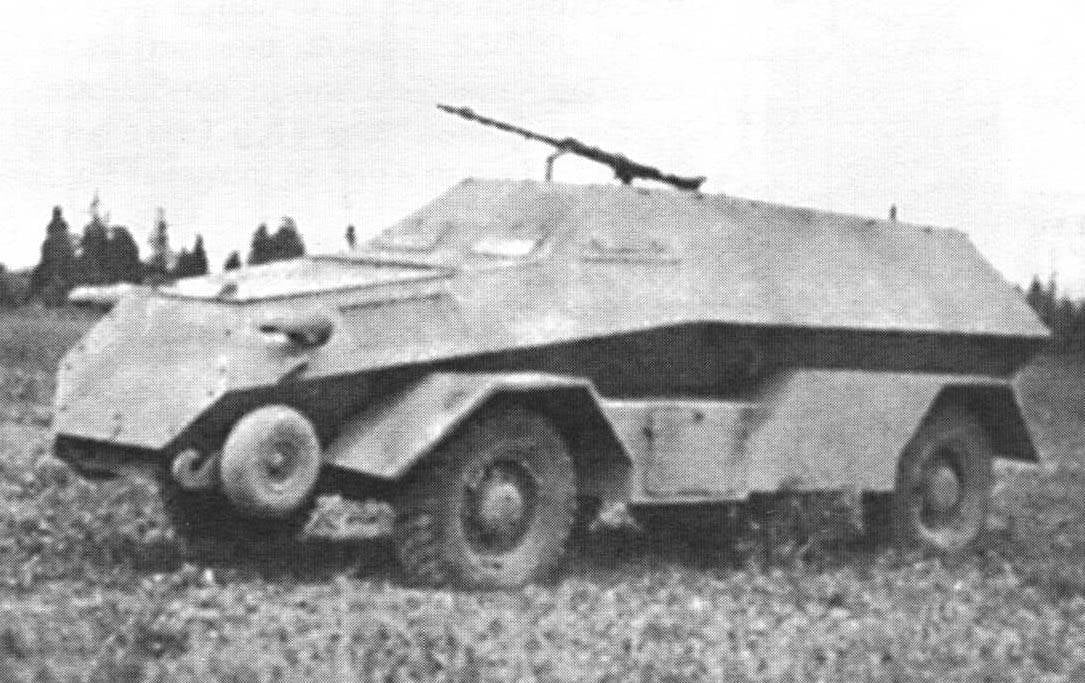
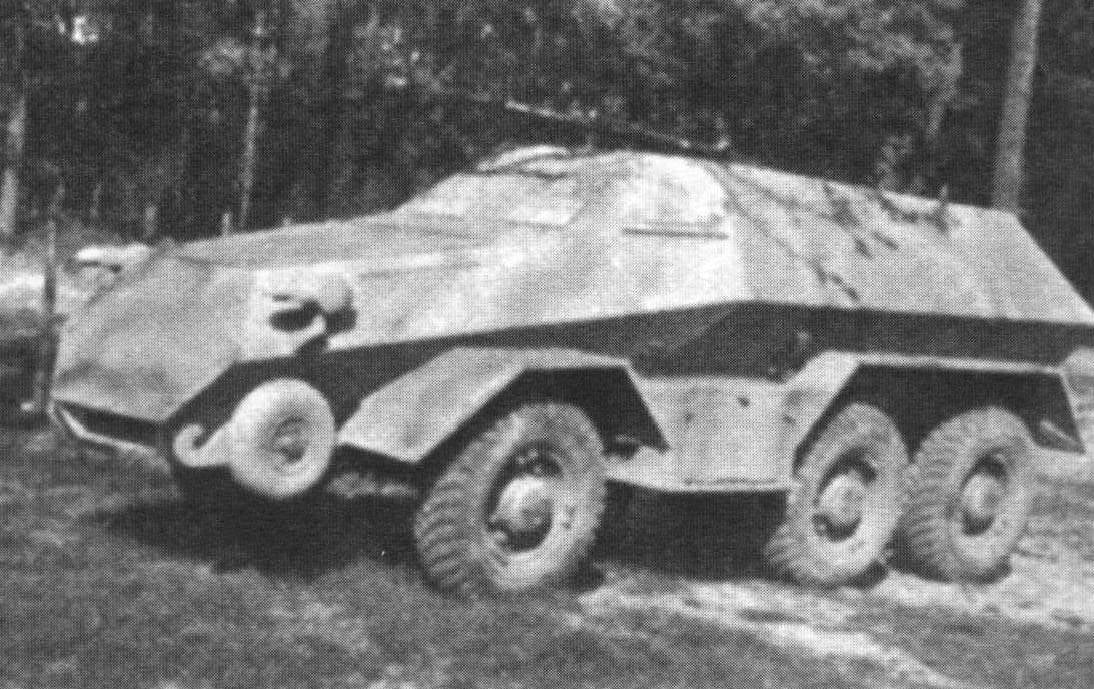
At first, the 300 was not actively exploited by the Lorraine 37L tracked armored troop-carriers in the Wehrmacht. Attempting to use them for the transport of various goods was not very successful: with a weight of 6 t, the carrying capacity of the tractor was only 800 kg. Therefore, already in 1940, the first attempts were made to re-equip these machines in an ACS: 47-mm French anti-tank guns were mounted on several tractors. The massive re-equipment of self-propelled units began in the year 1942. The Lorraine 37L chassis produced three types of ACS: 7,5 cm Cancer 40 / 1 auf Lorraine Schlepper (f) Marder I (Sd.Kfz.135) - self-propelled 75-mm anti-tank gun (manufactured by 179 units); 15 cm sFH 13 / 1 auf Lorraine Schlepper (f) (Sd.Kfz. 135 / 1) - self-propelled 150-mm howitzer (manufactured by 94 units); 10,5 cm leFH 18 / 4 auf Lorraine Schlepper (f) - 105-mm self-propelled howitzer (manufactured by 12 units).
All these self-propelled guns were structurally and externally similar to each other and differed from each other basically only in the artillery system, which was located in the box-shaped cabin open at the top of the car.
Self-propelled guns on the Lorraine chassis were also used by the Germans on the Eastern Front and in North Africa, and in France in the 1944 year.
The structure of one of the German armored trains included an ACS on the chassis of the Lorraine Schlepper (f), in which the Soviet 122-mm MZO howitzer was installed in the standard wheelhouse.
On the basis of the Lorraine, the Germans created the 30 fully armored surveillance and communication vehicles.
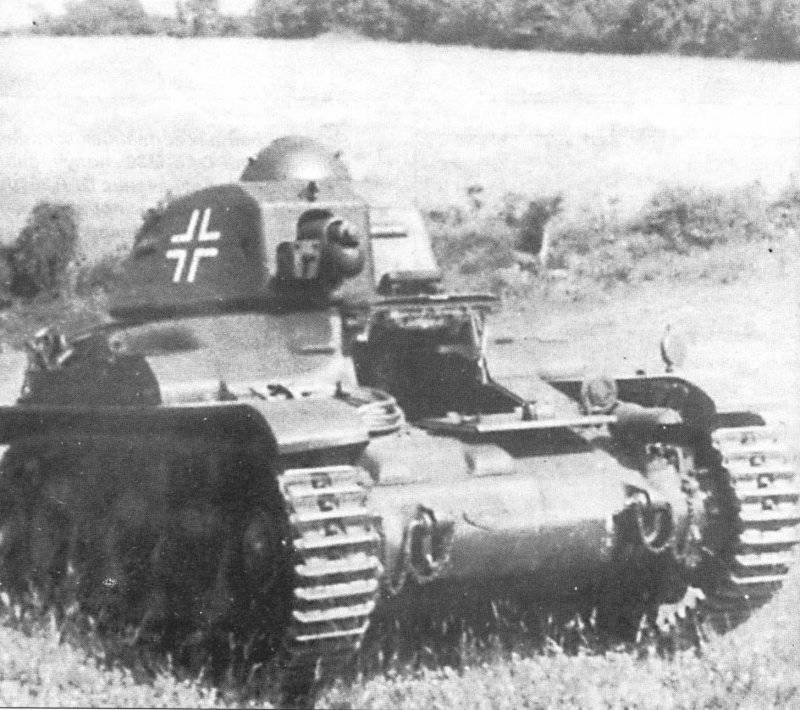
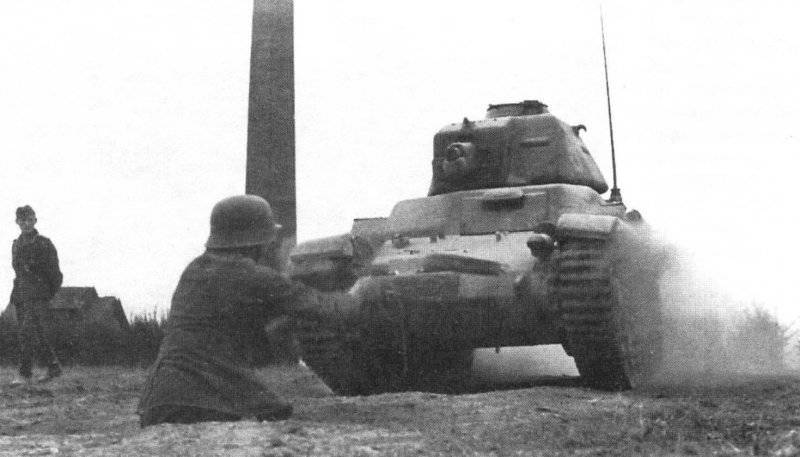
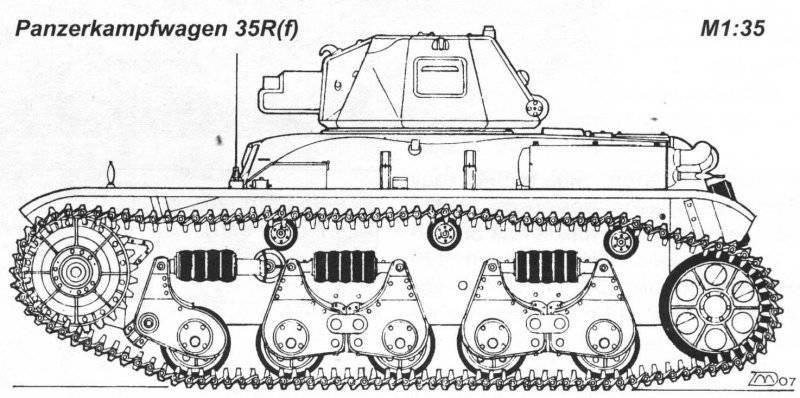
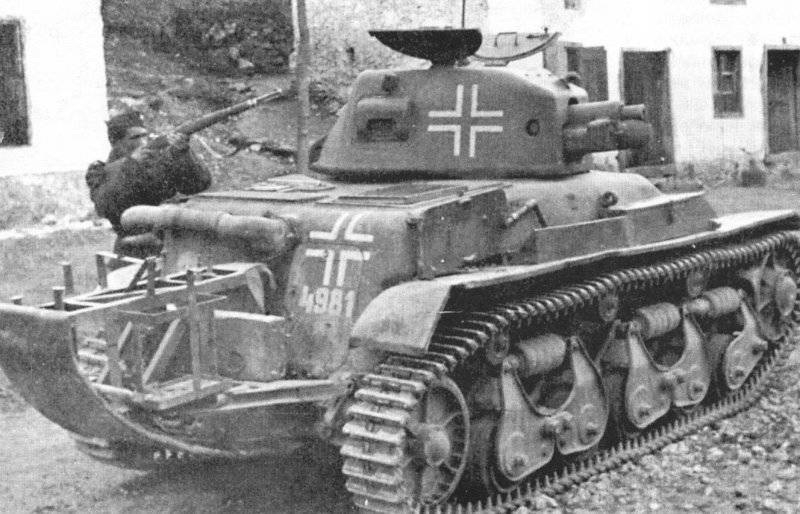
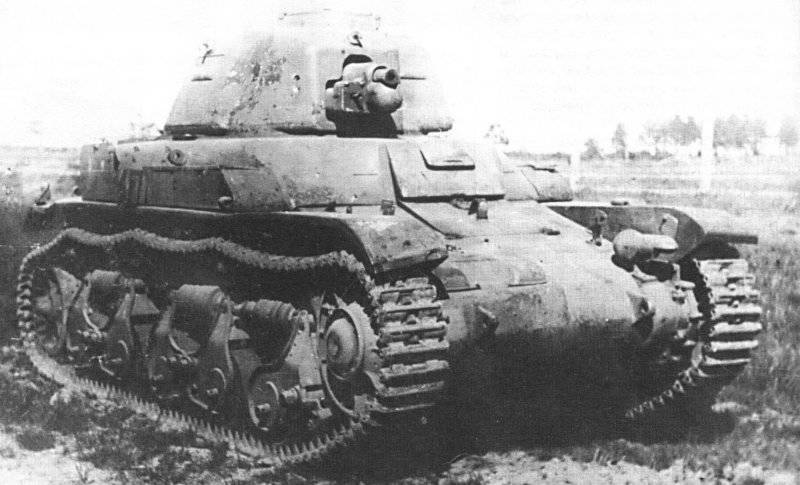
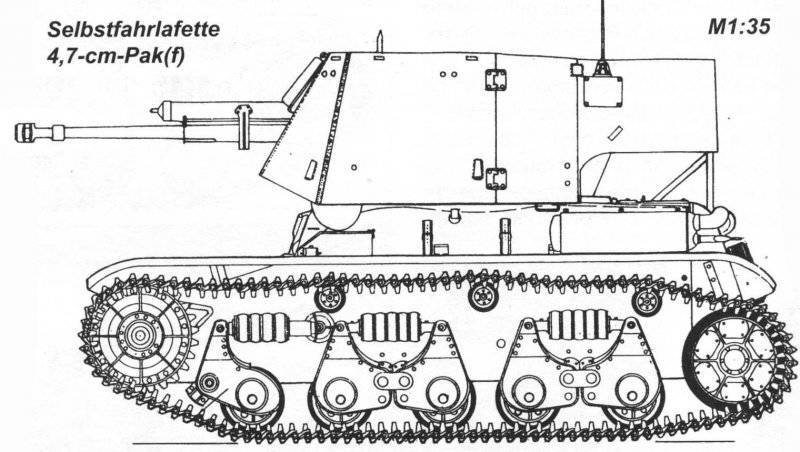
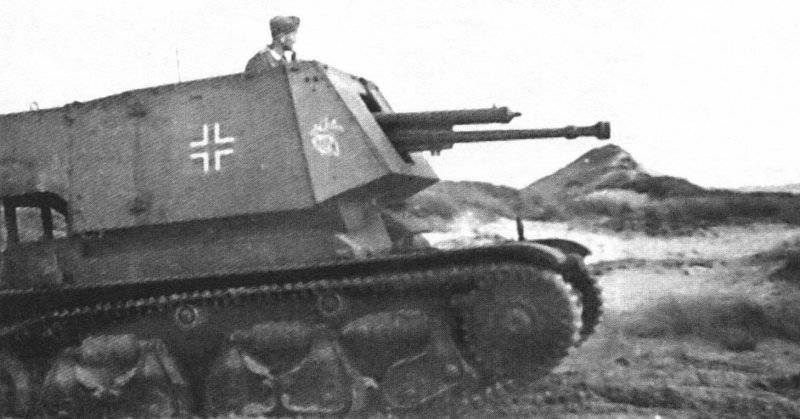
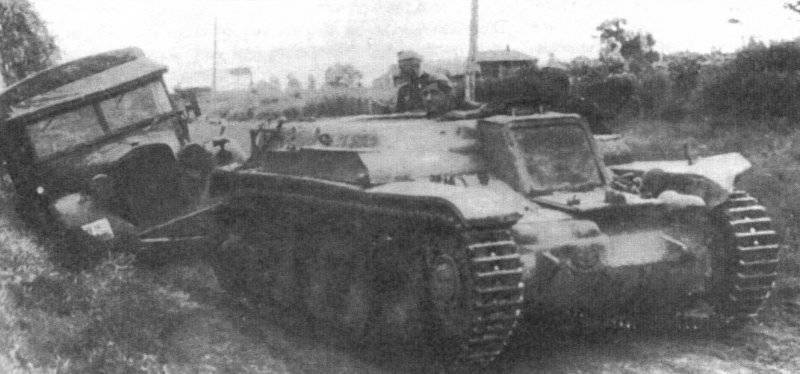
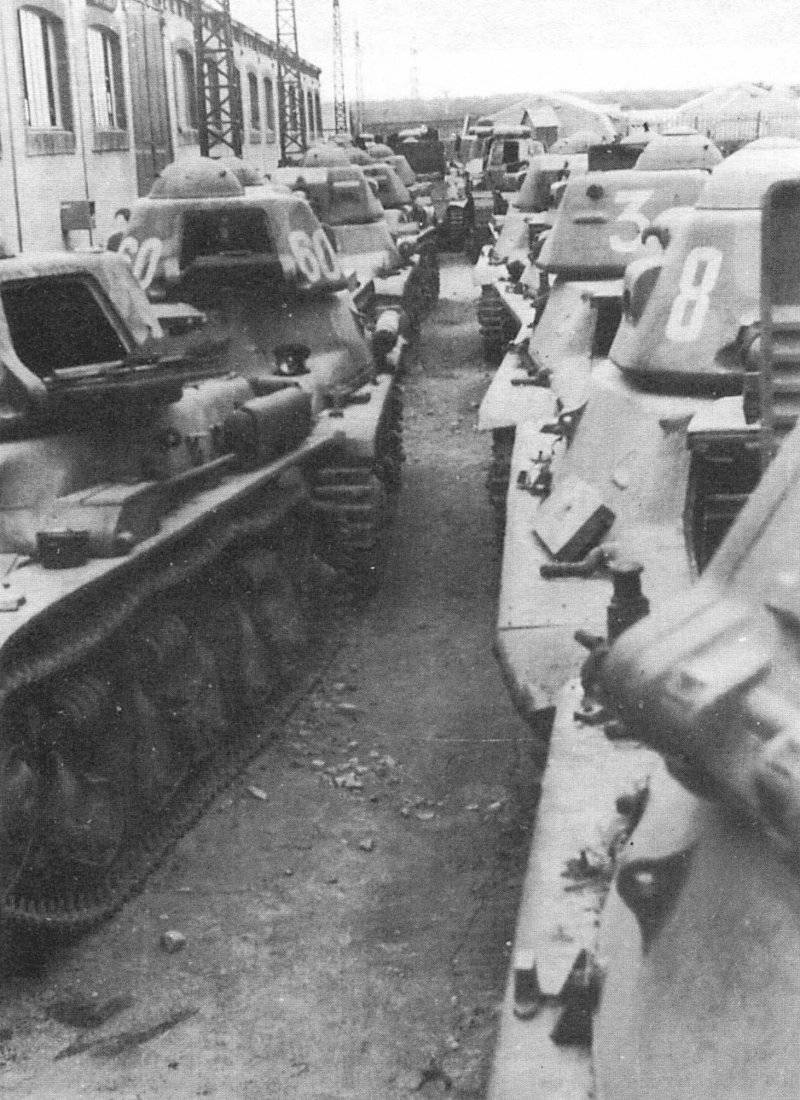
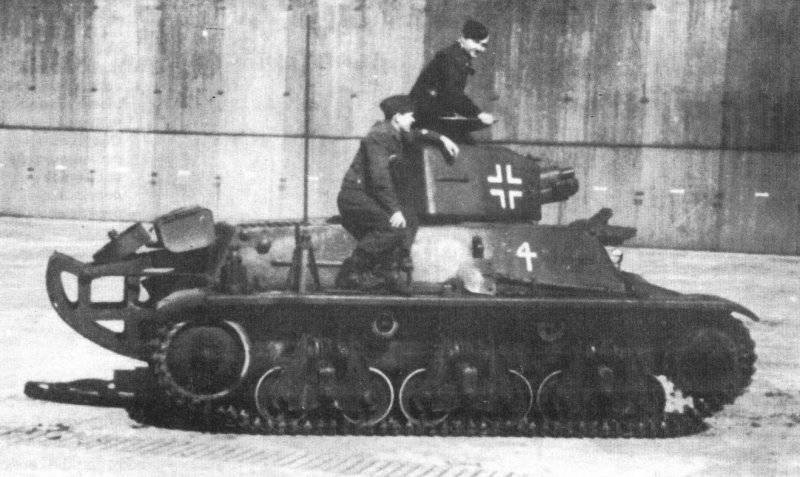
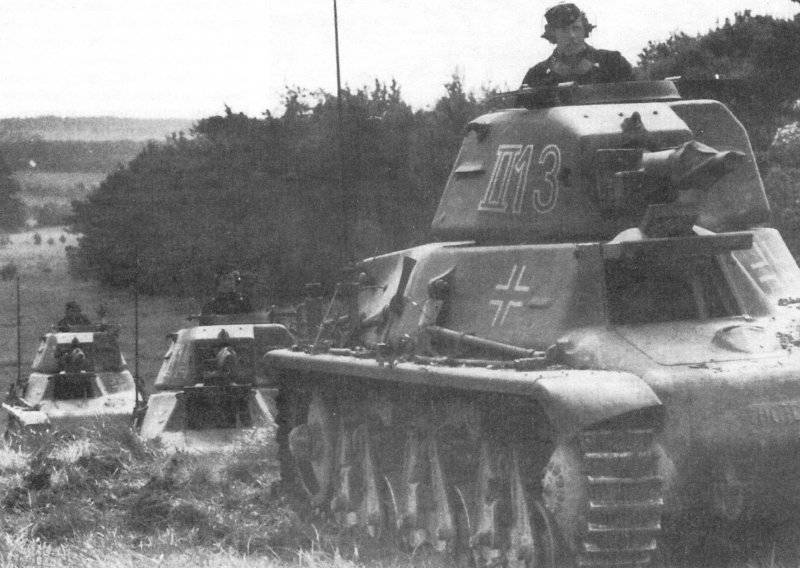
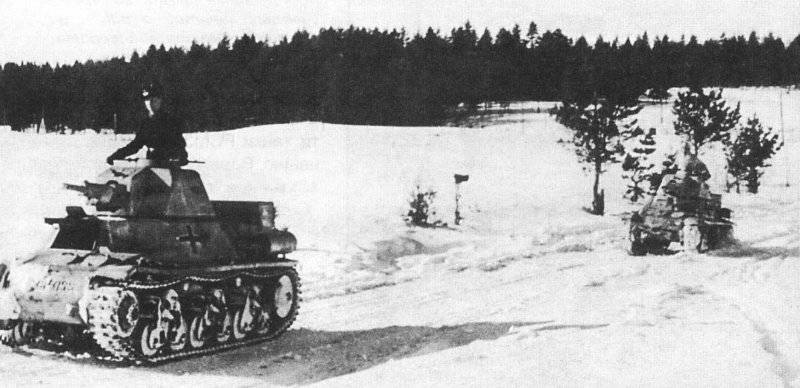
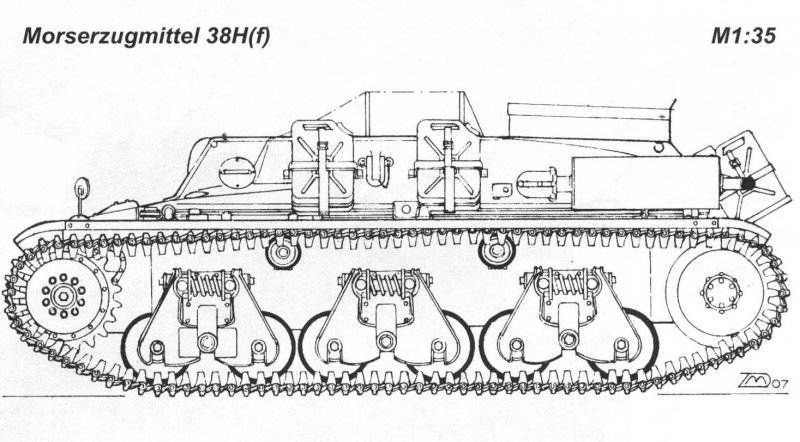
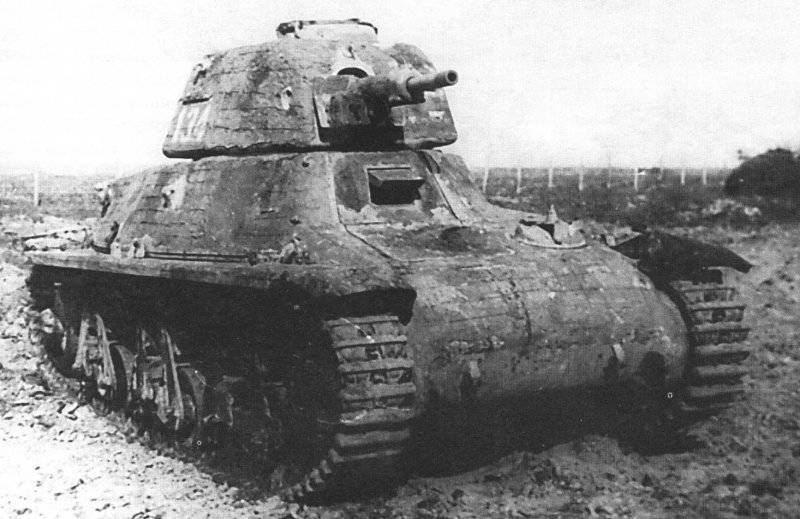
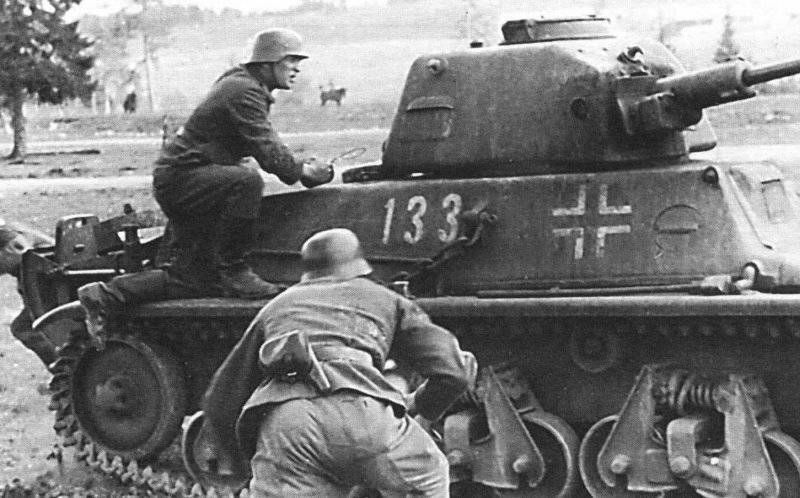
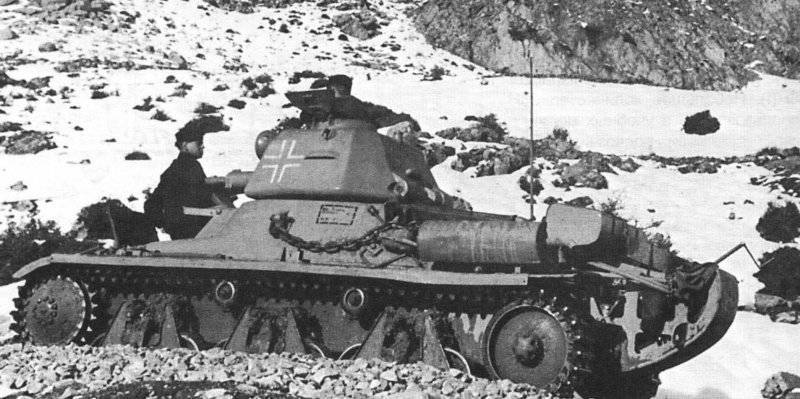
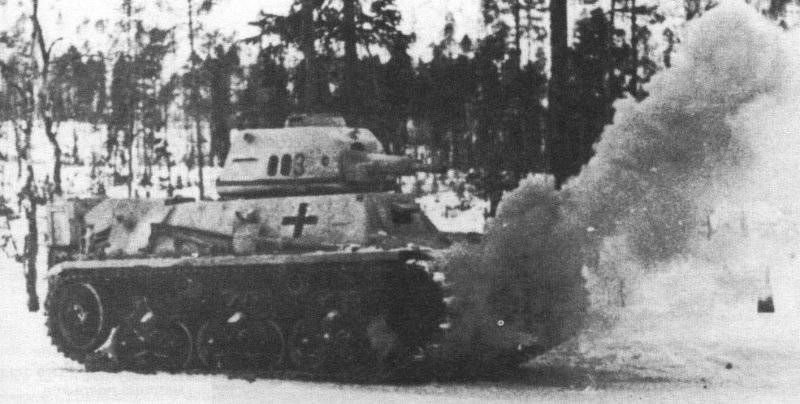
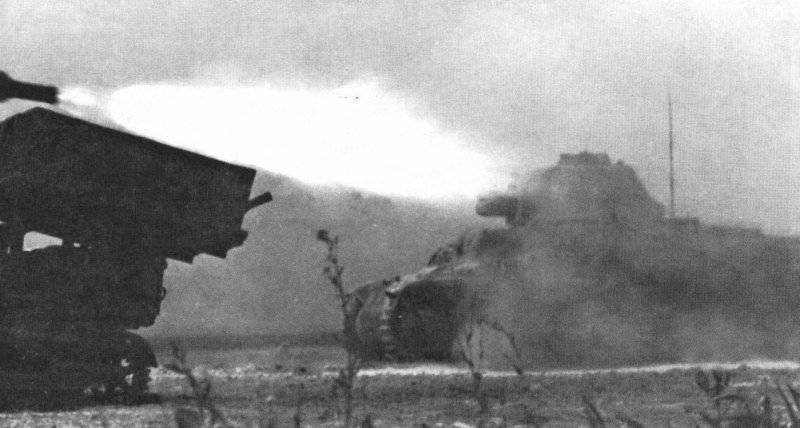
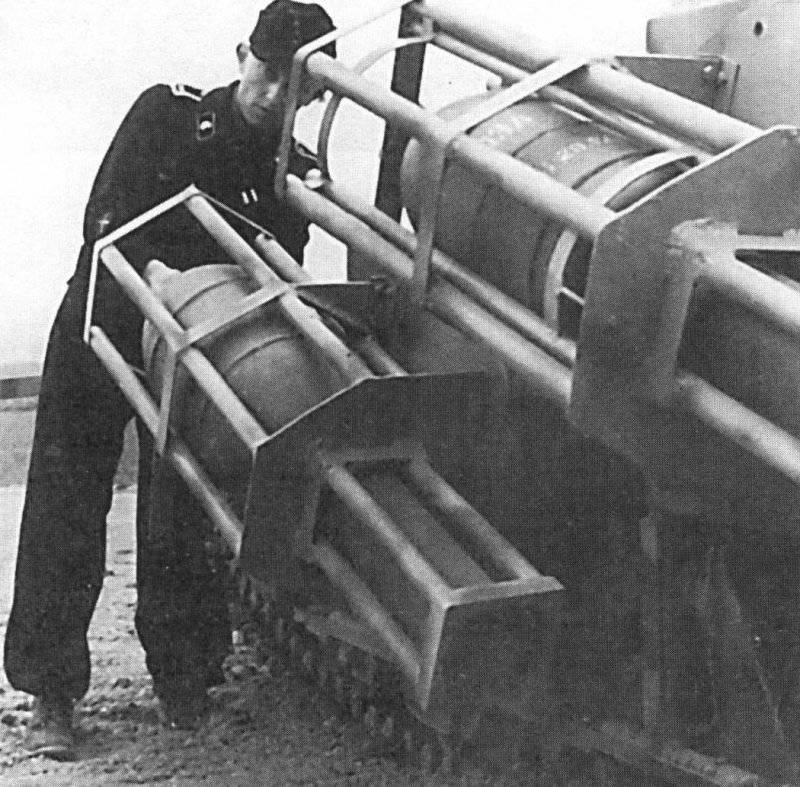
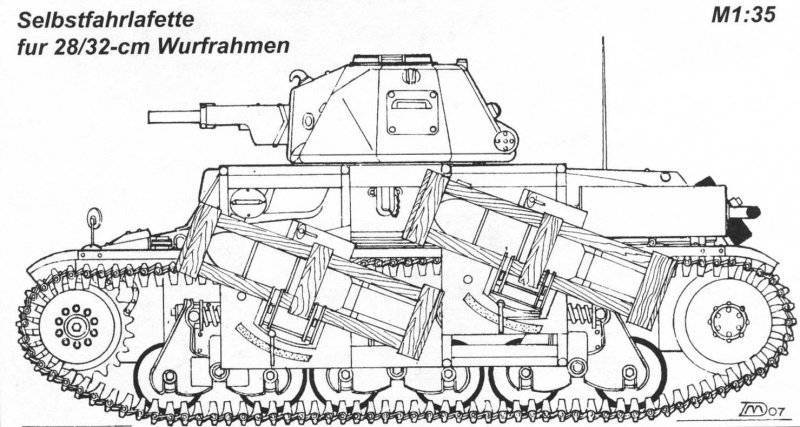
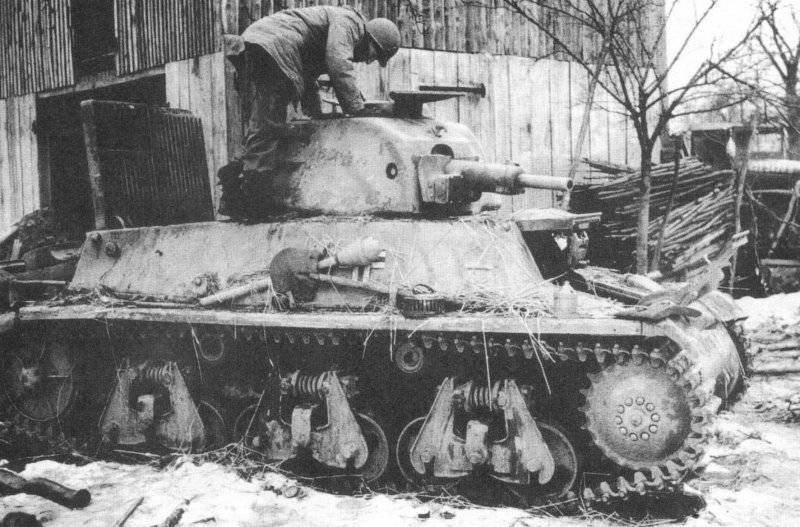
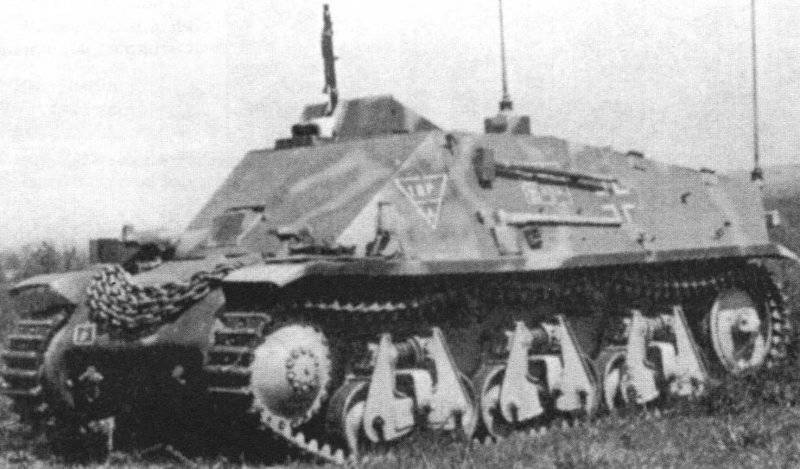
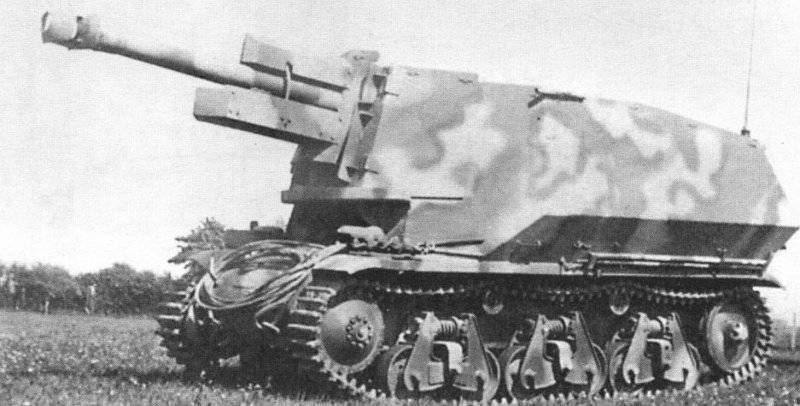
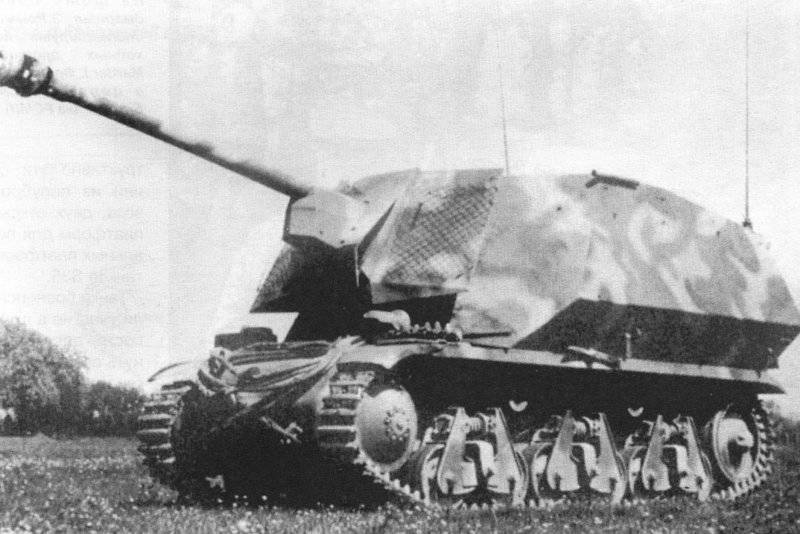
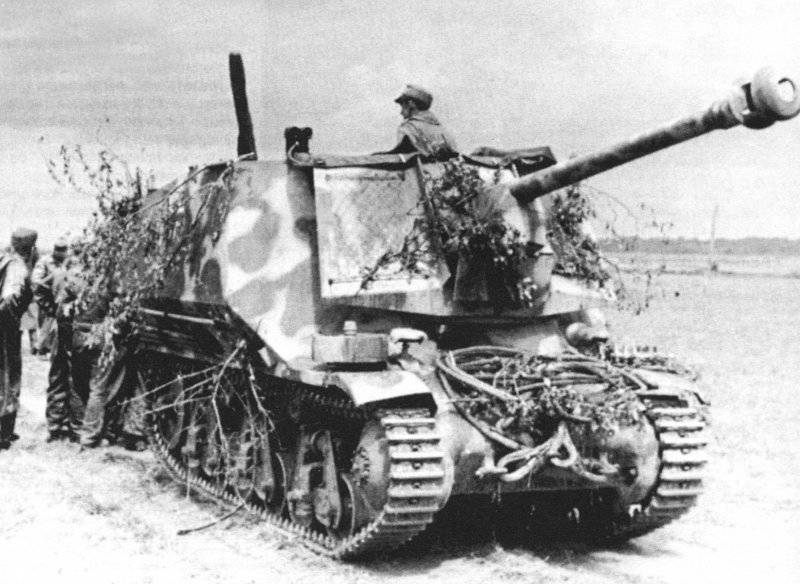
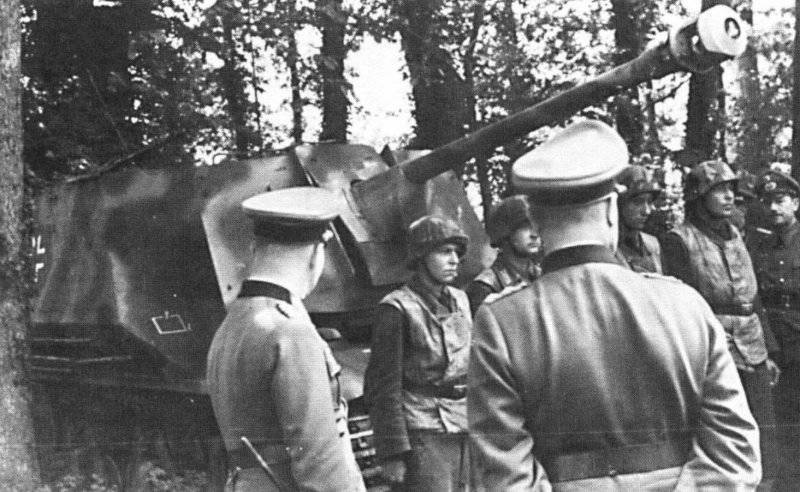
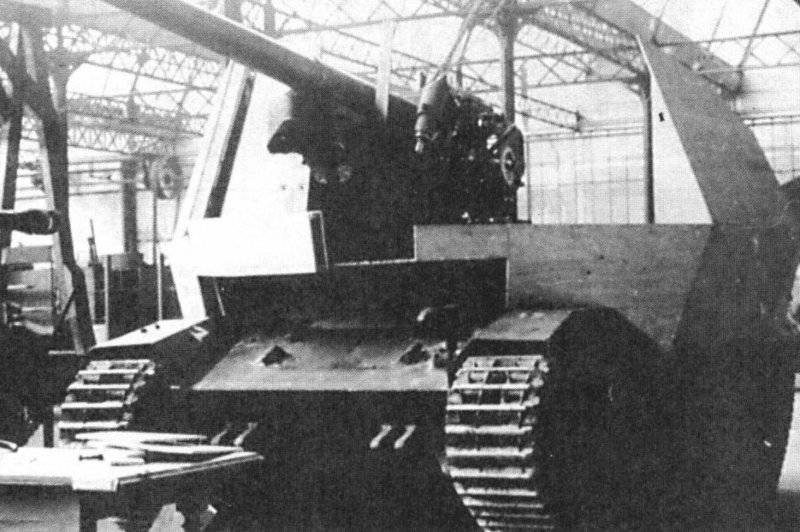
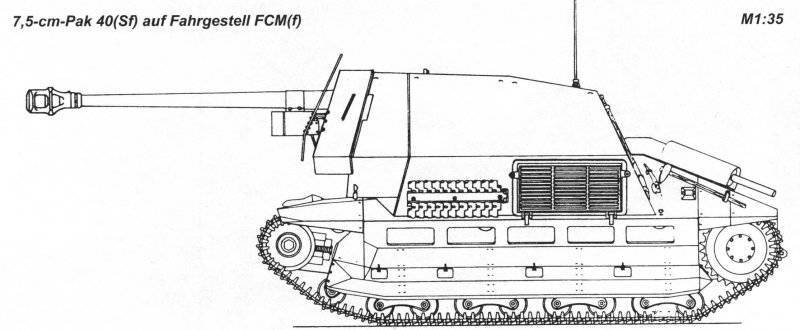
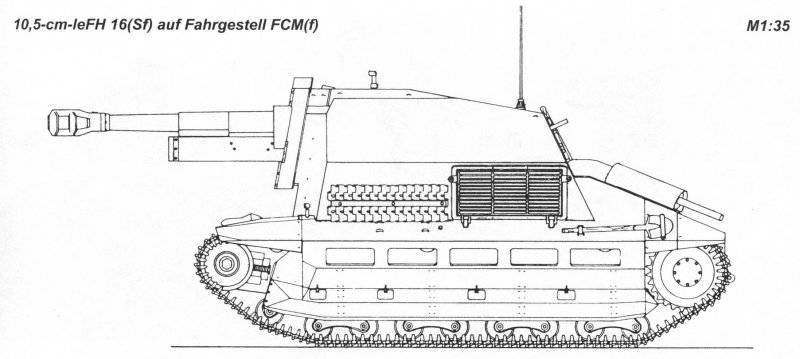
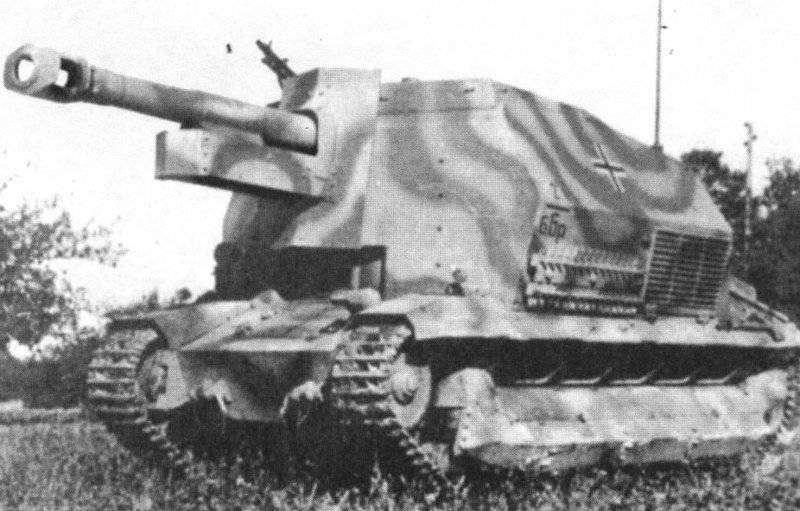
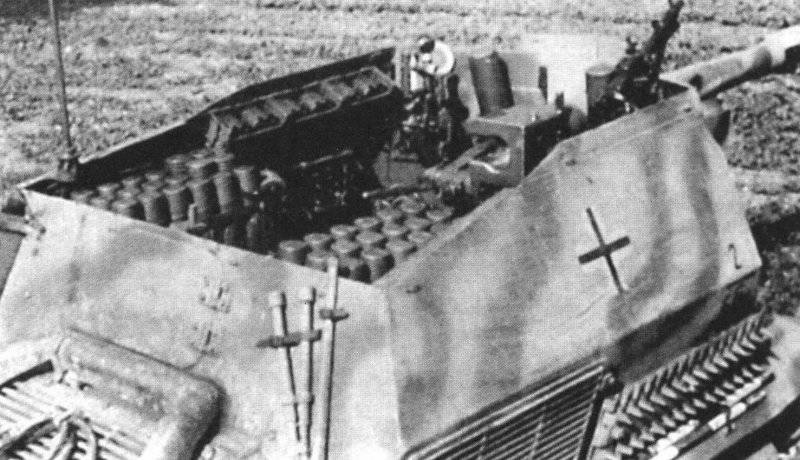
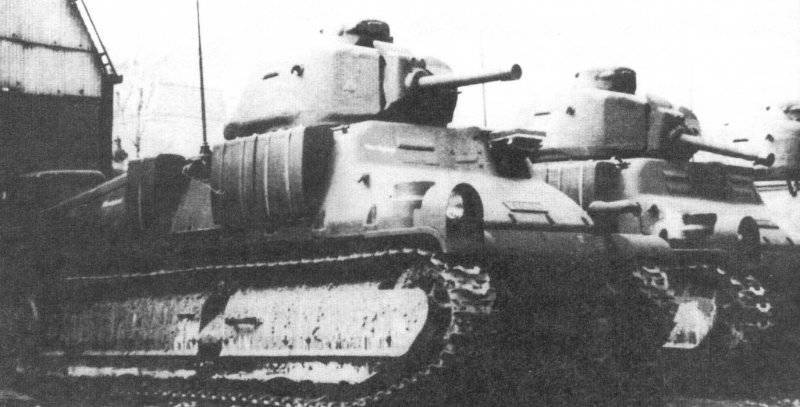

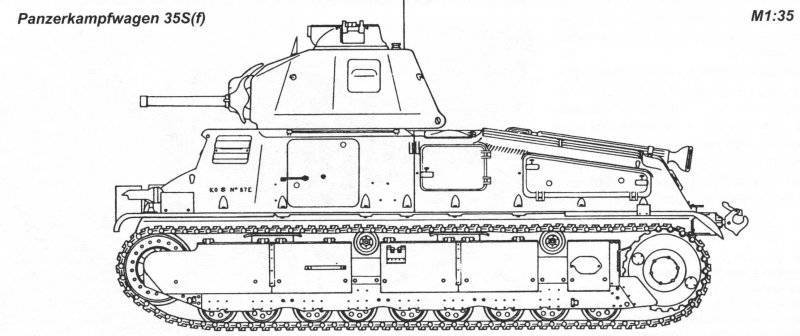
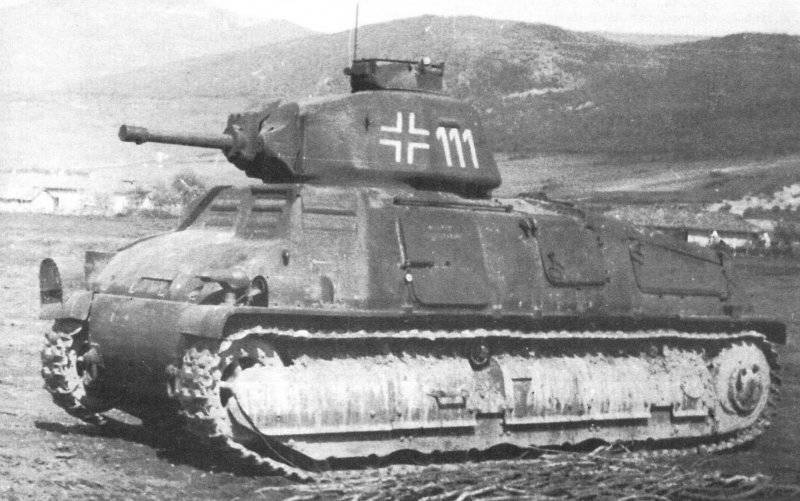
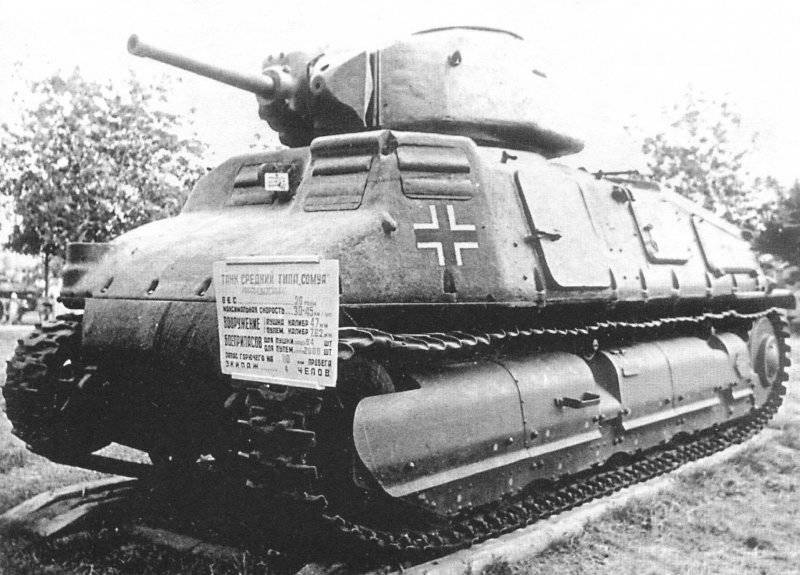
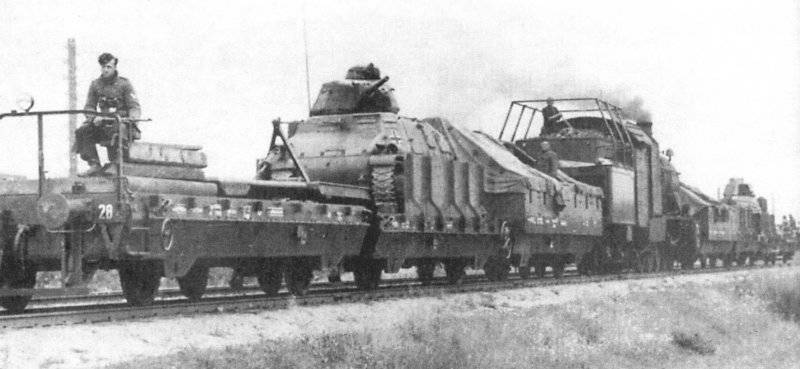
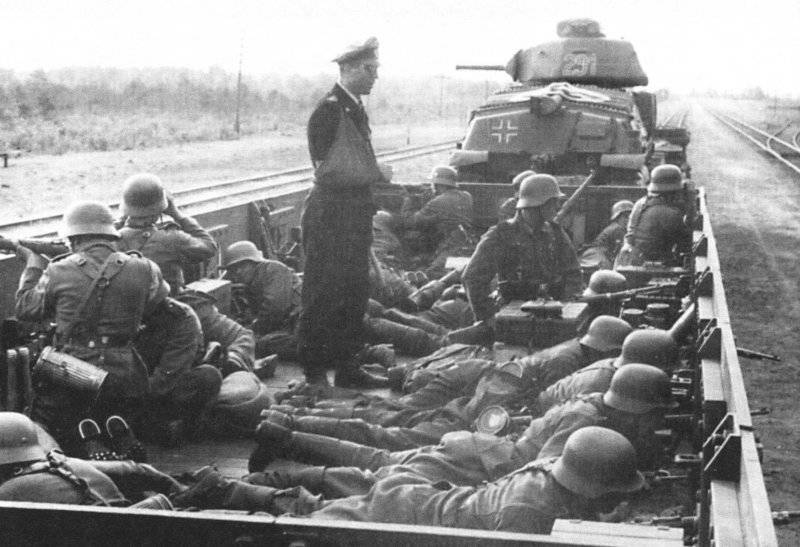
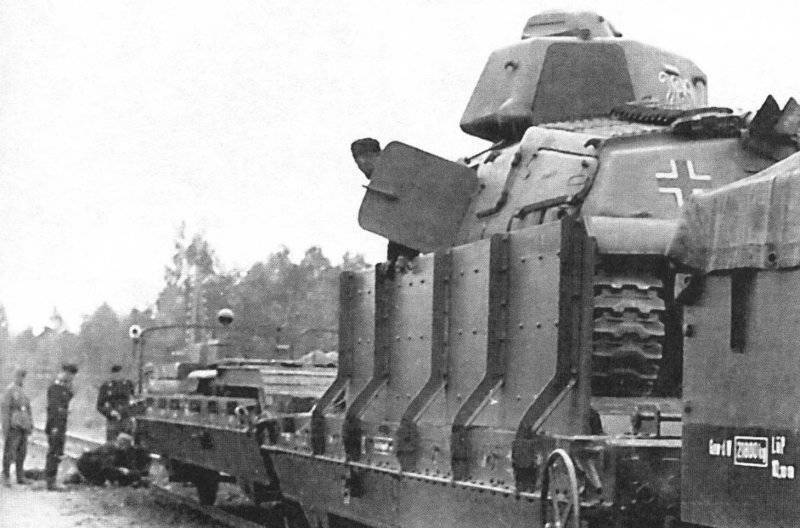
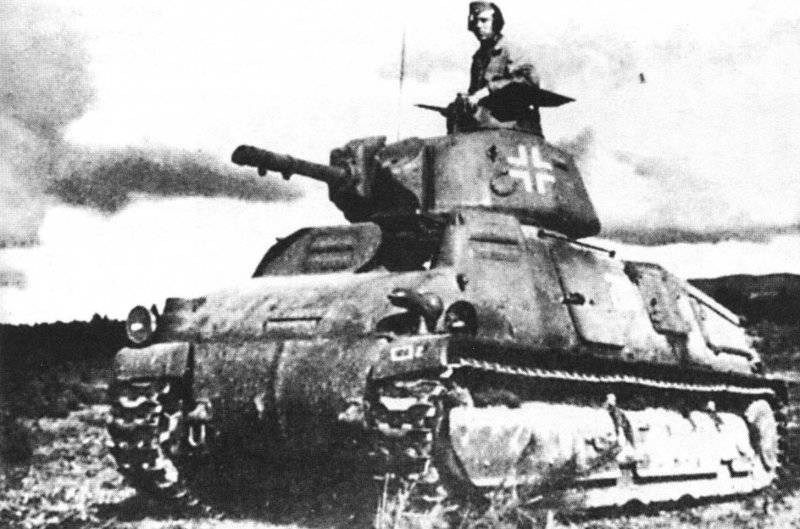
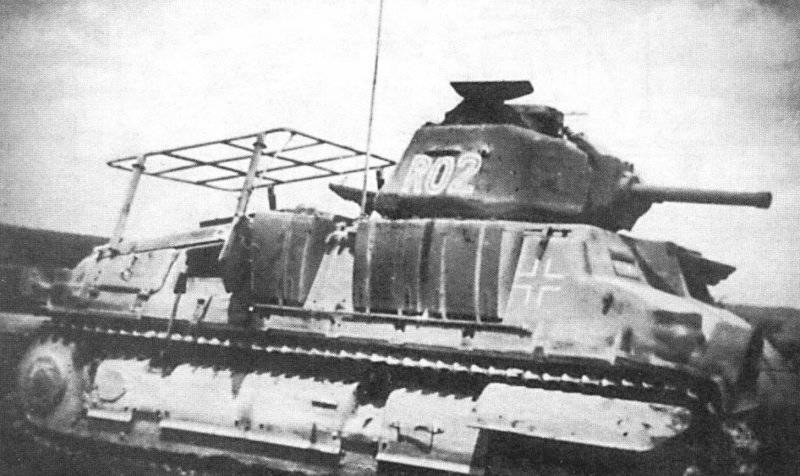
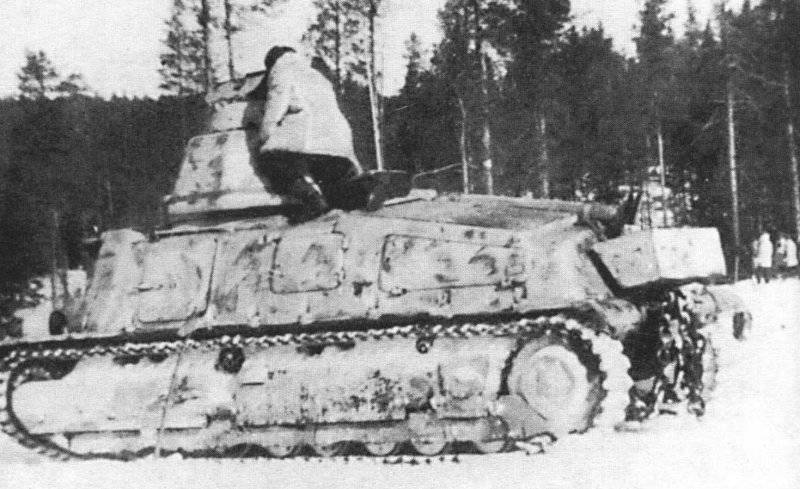
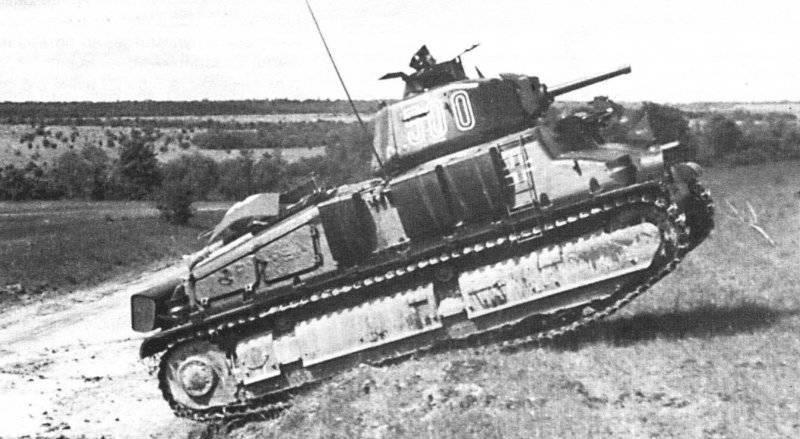
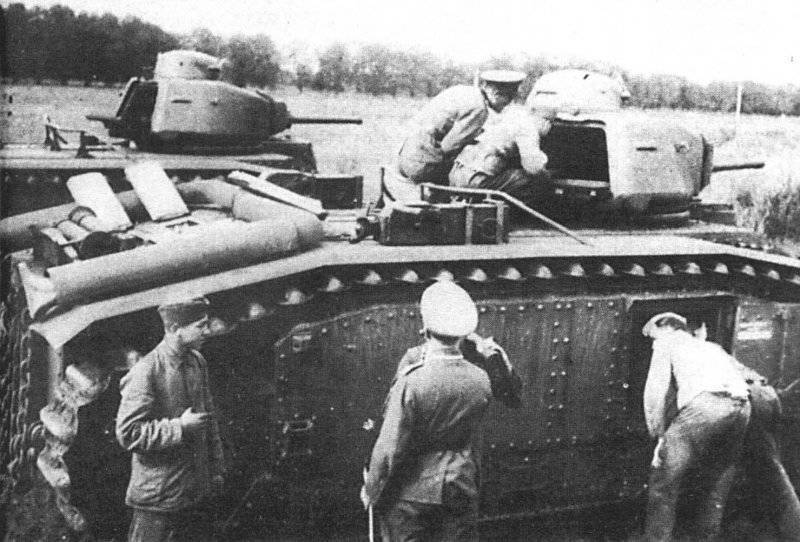
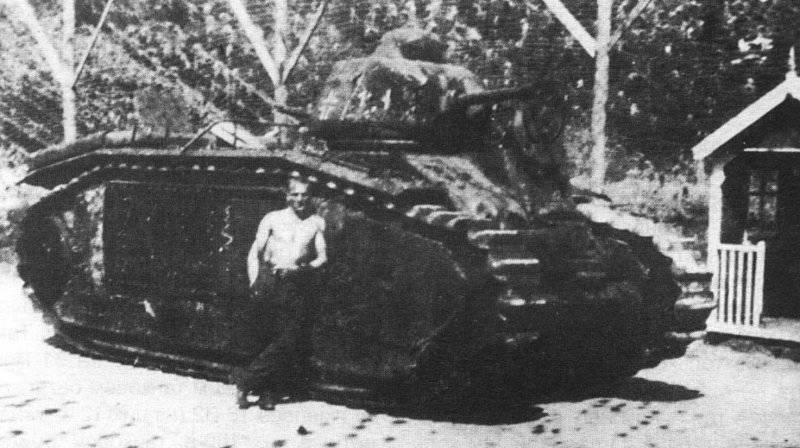
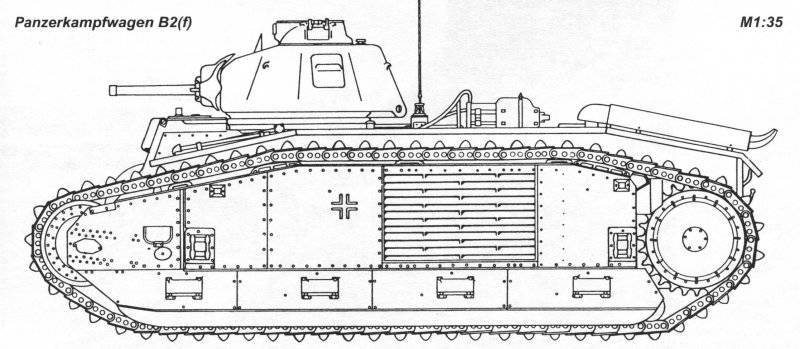
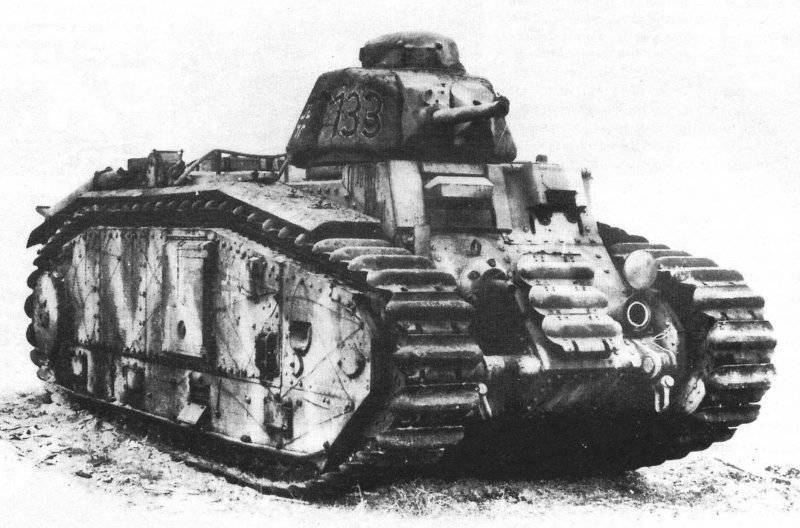
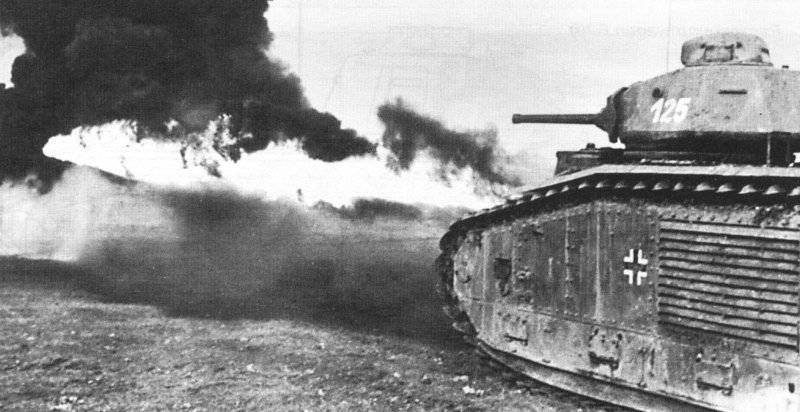
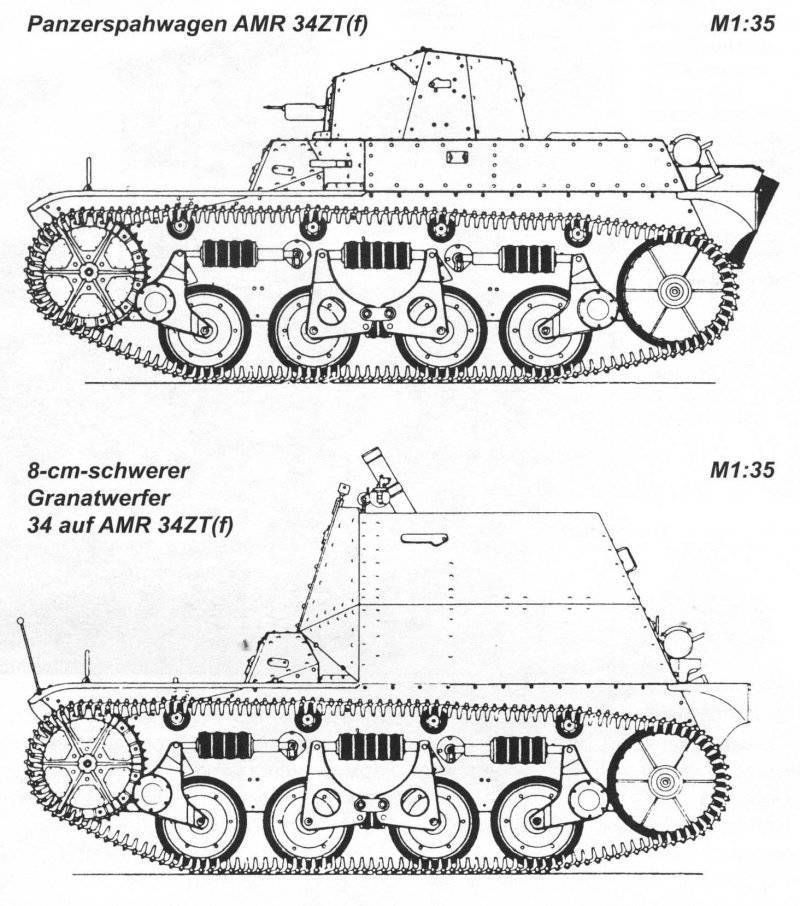
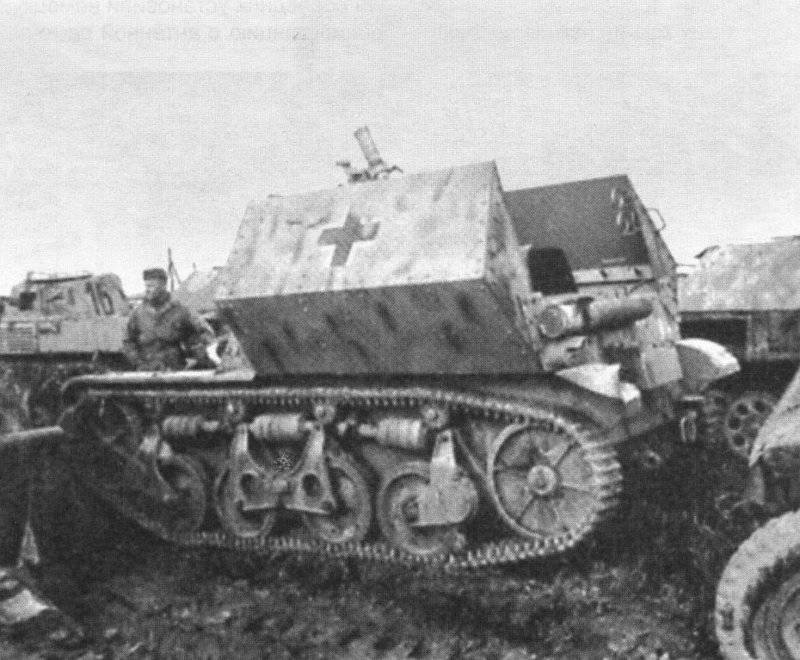
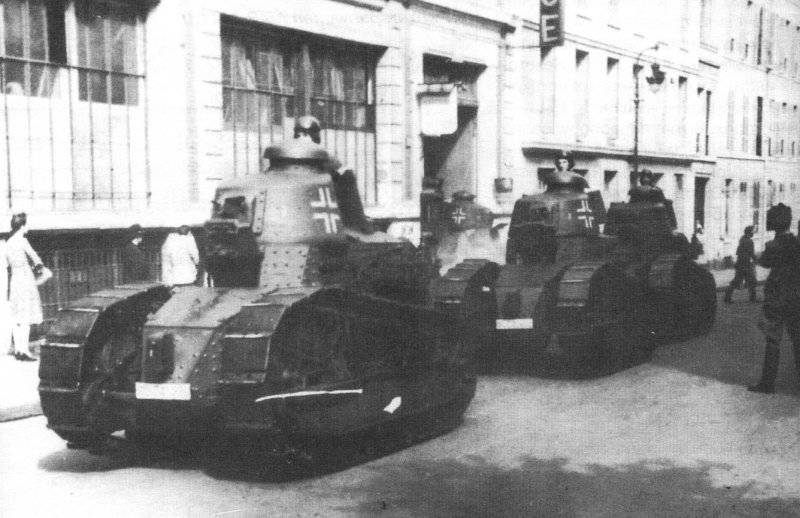
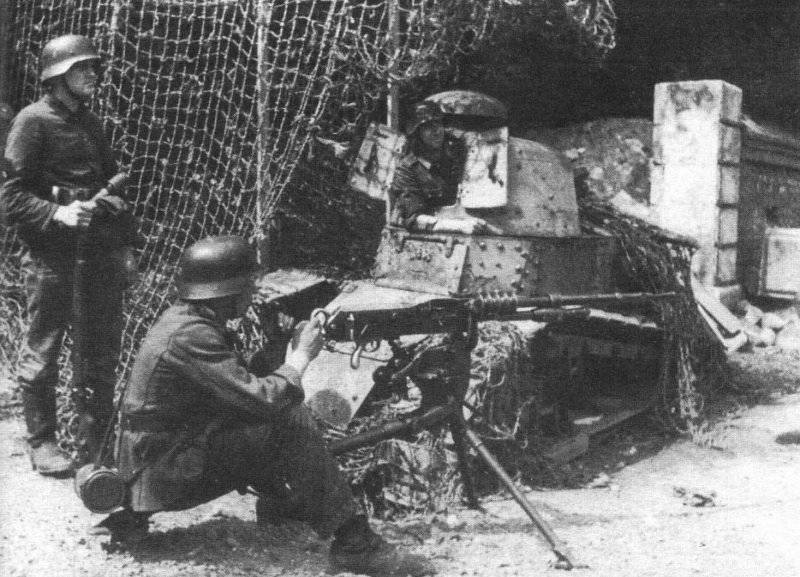
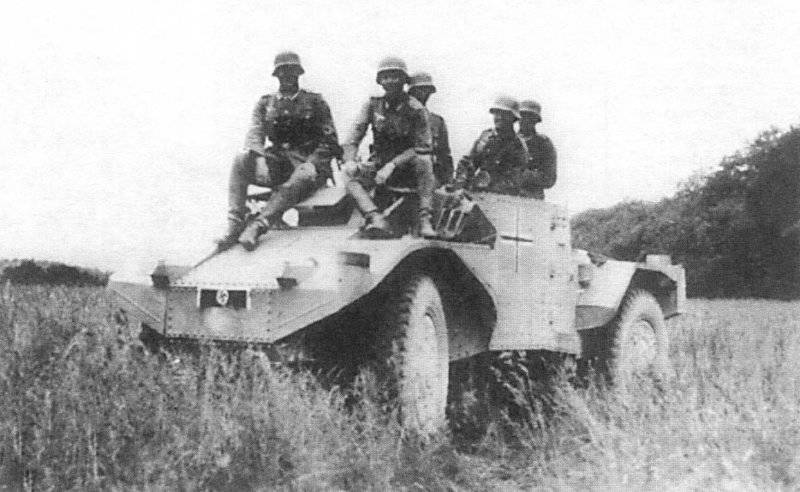
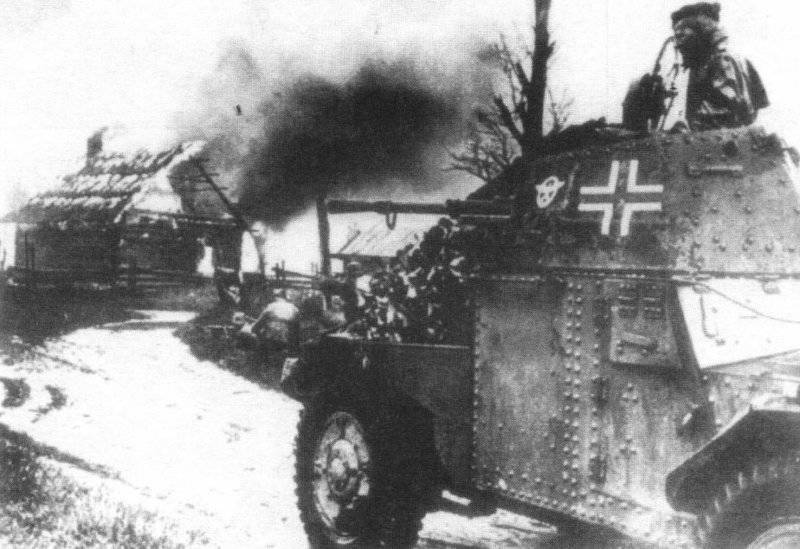
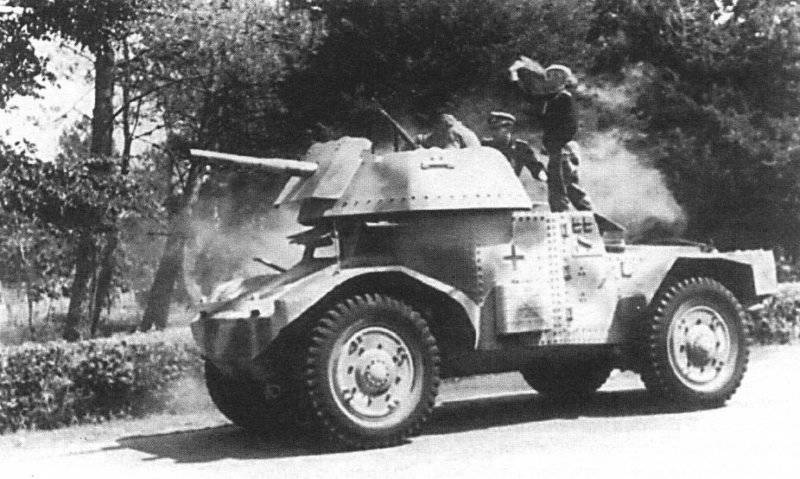
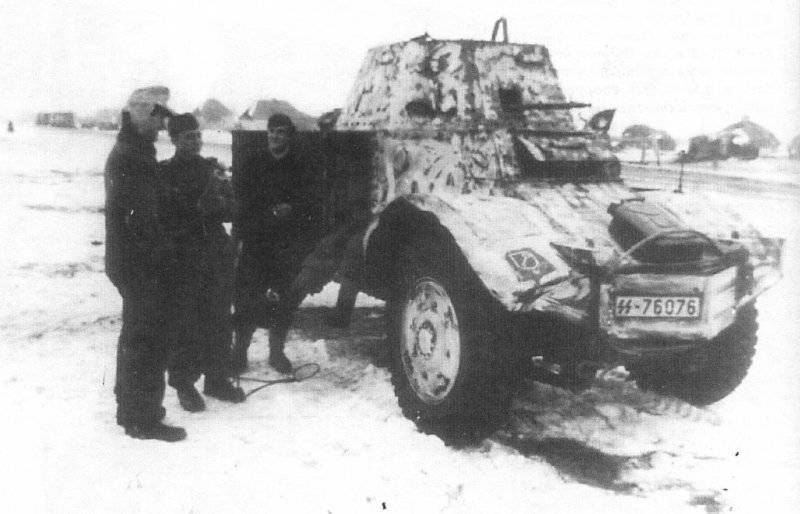
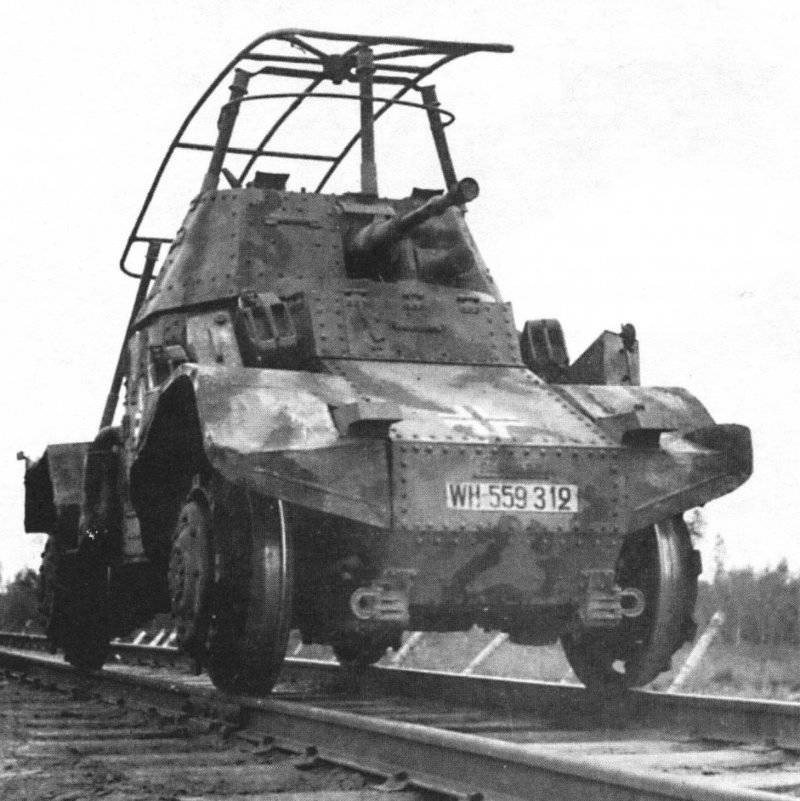
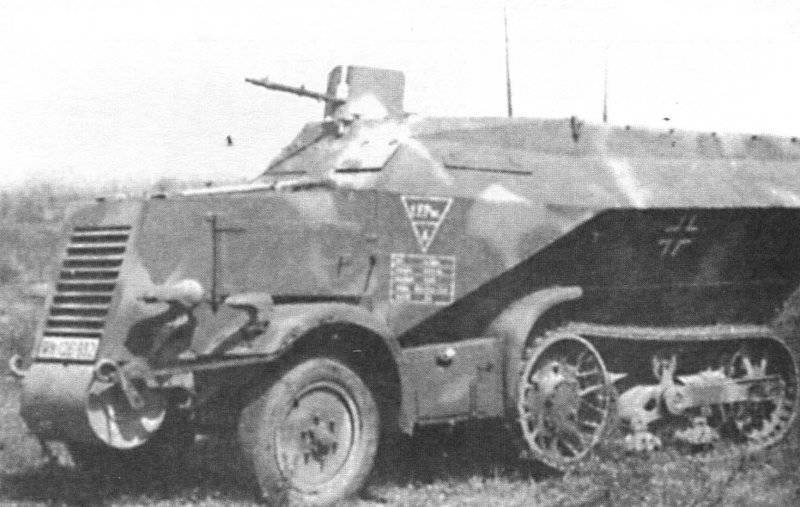
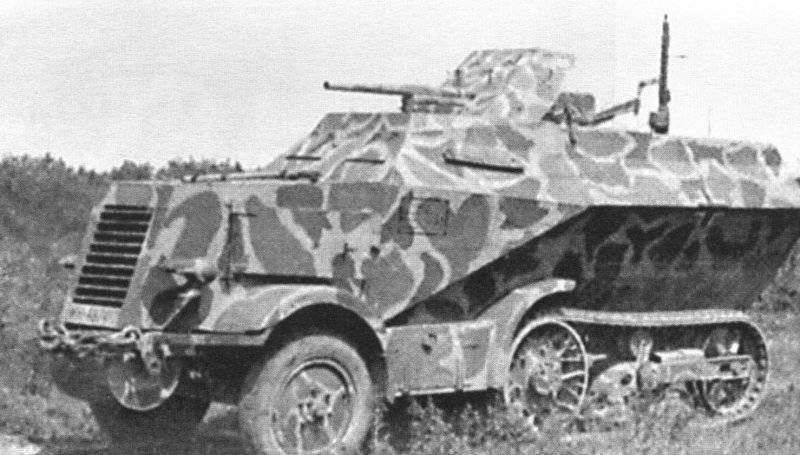
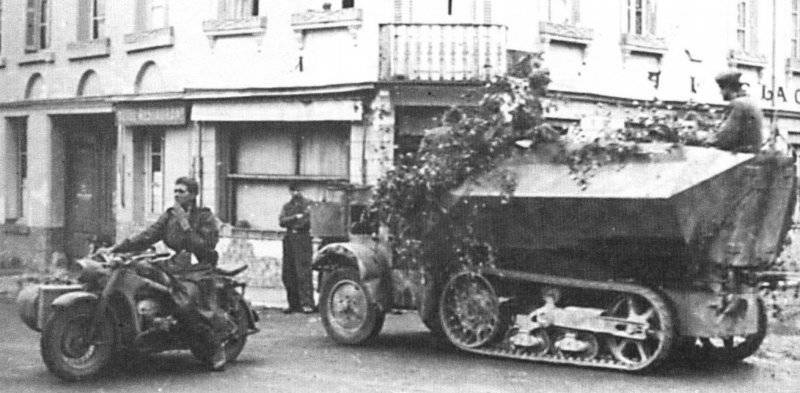
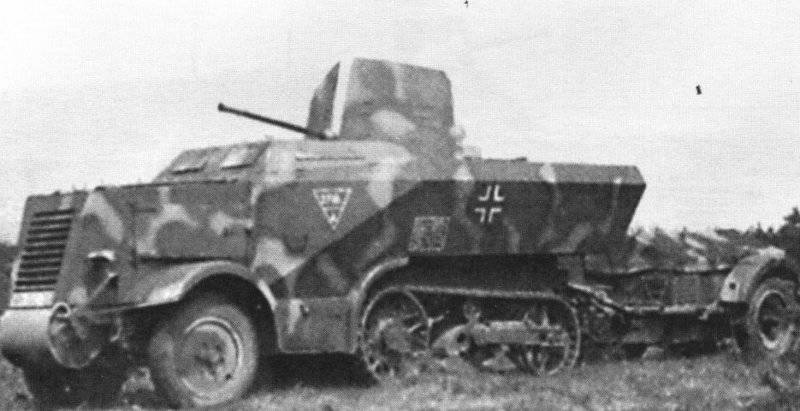
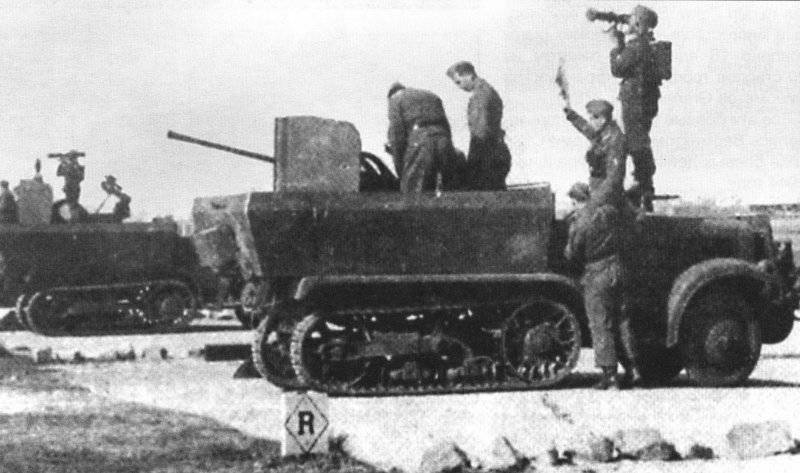
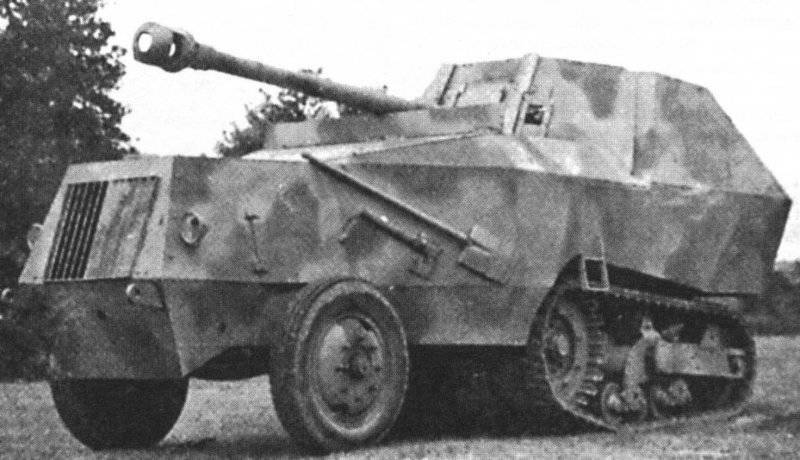
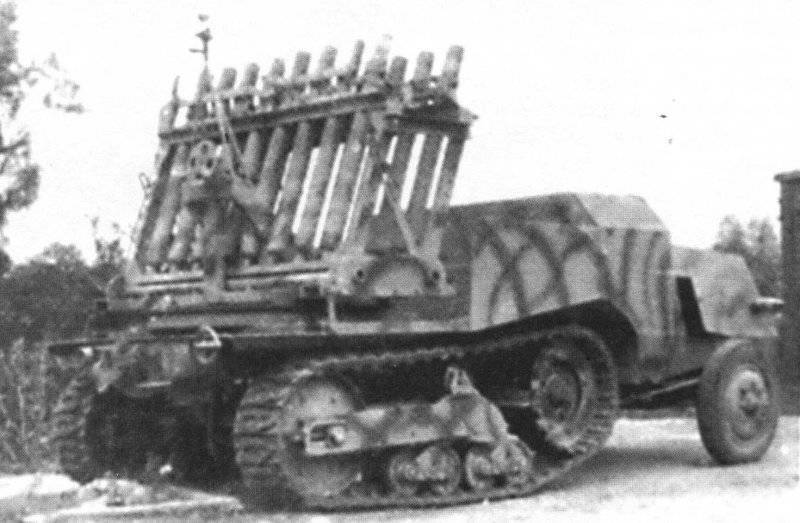
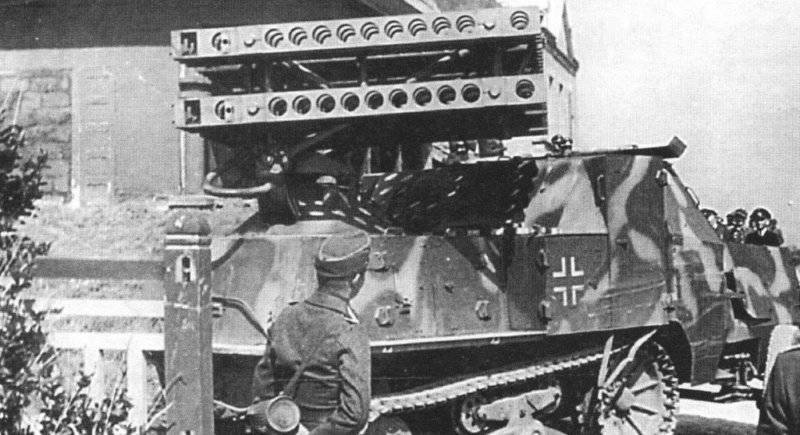
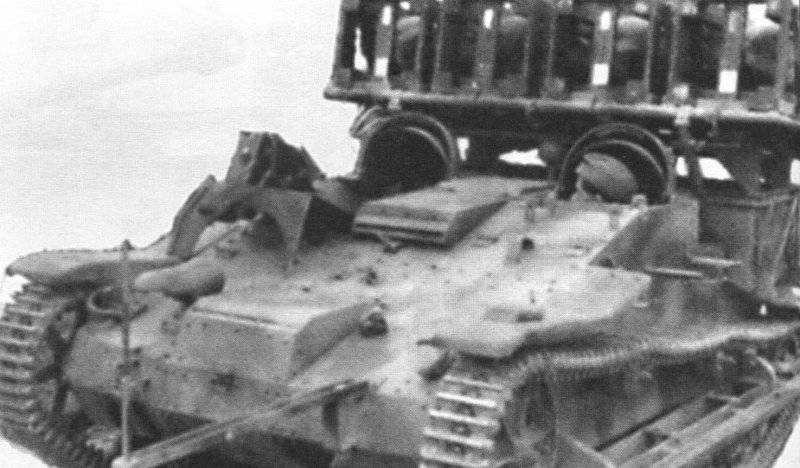
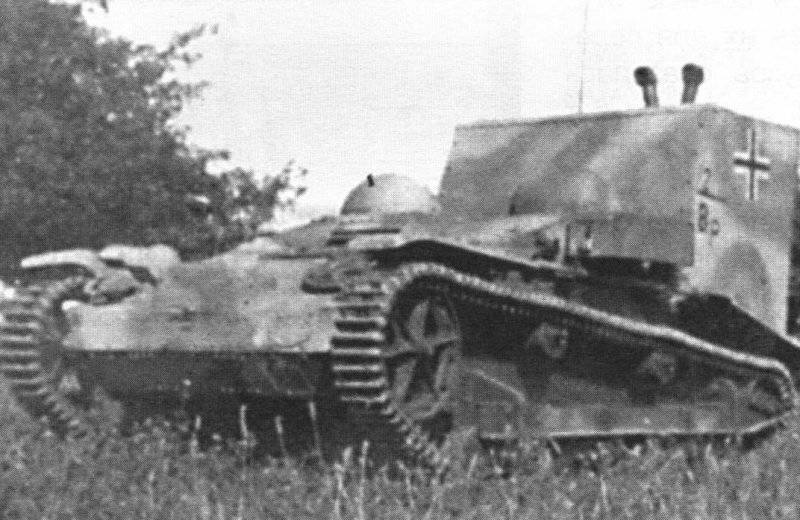
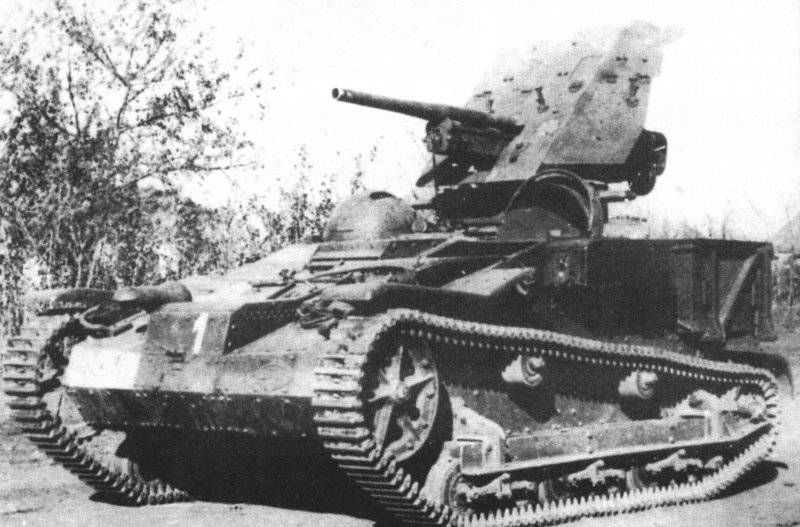
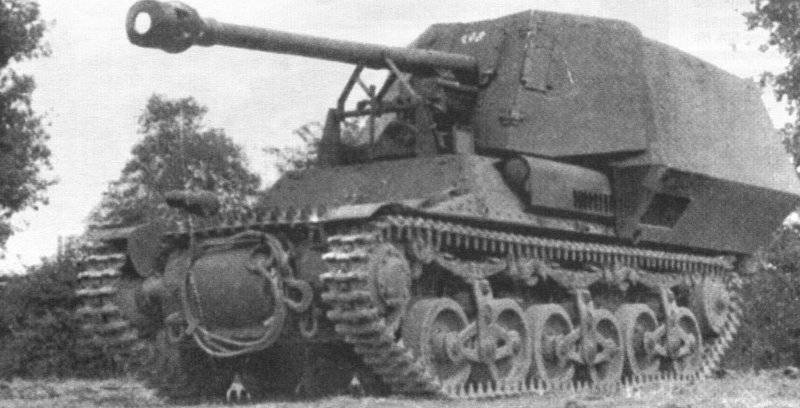
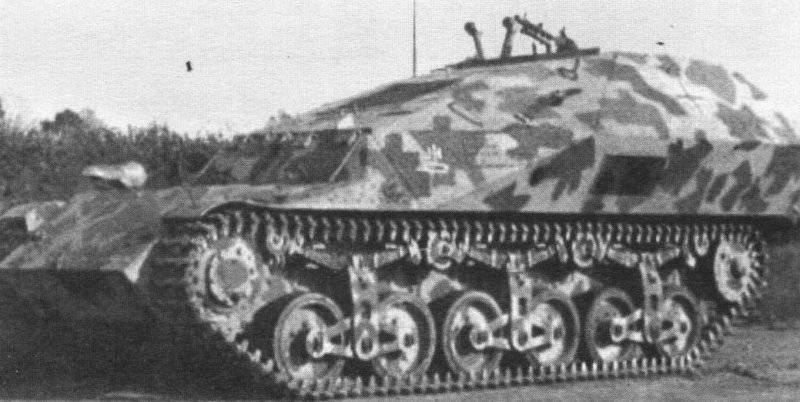
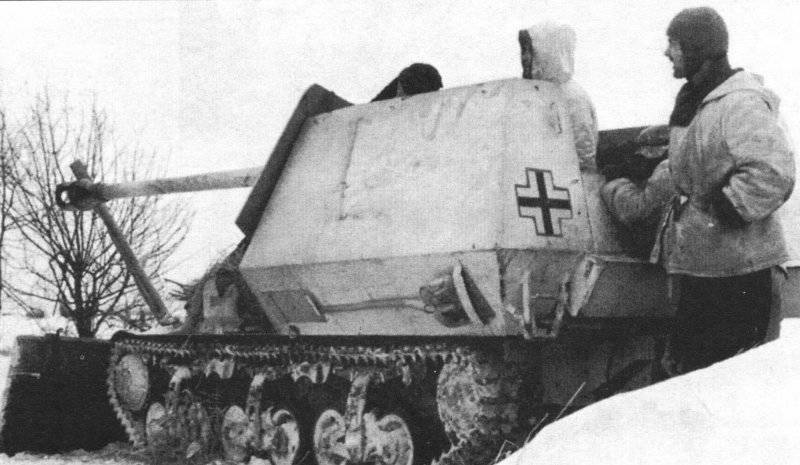
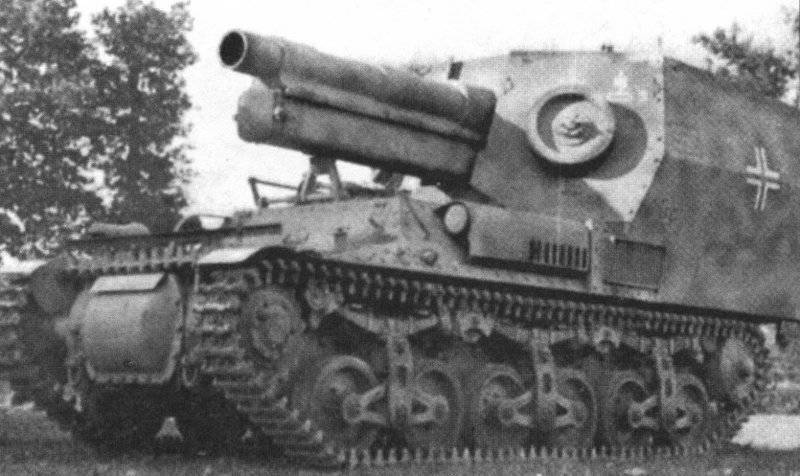
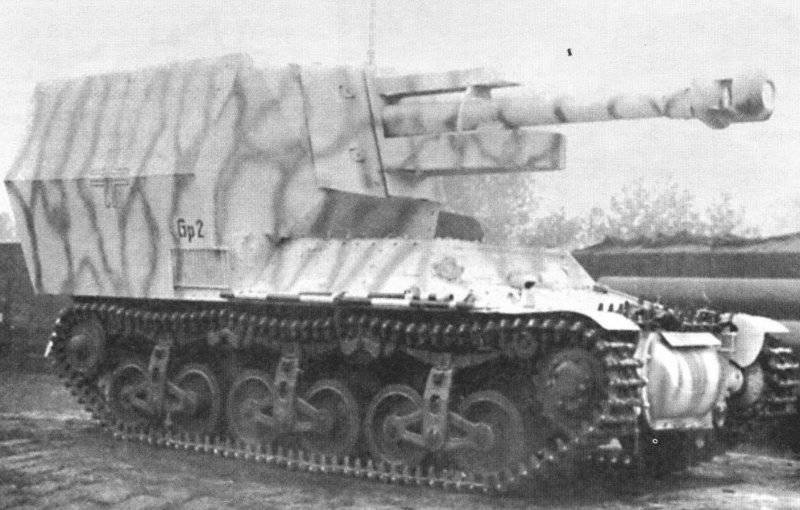

Information